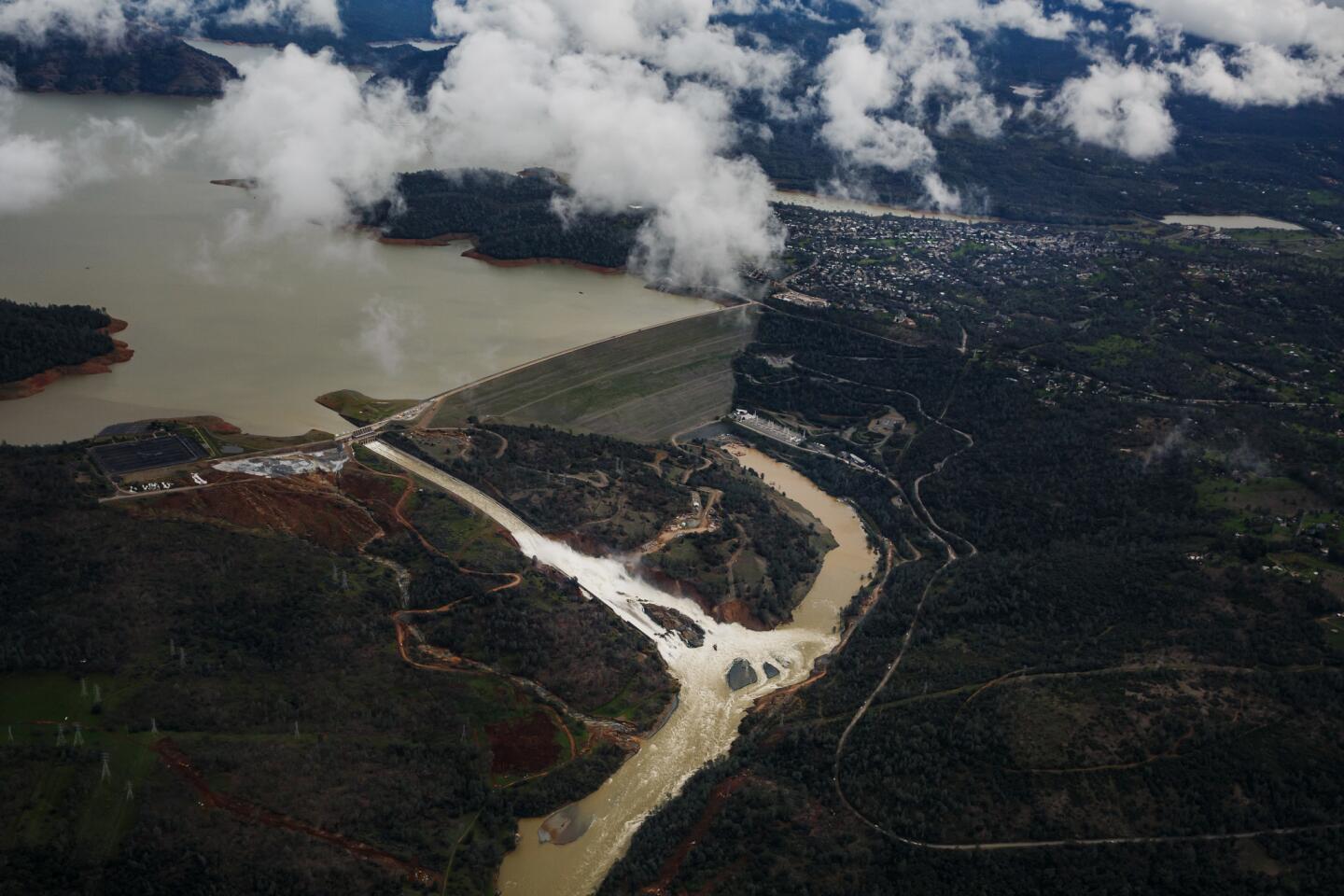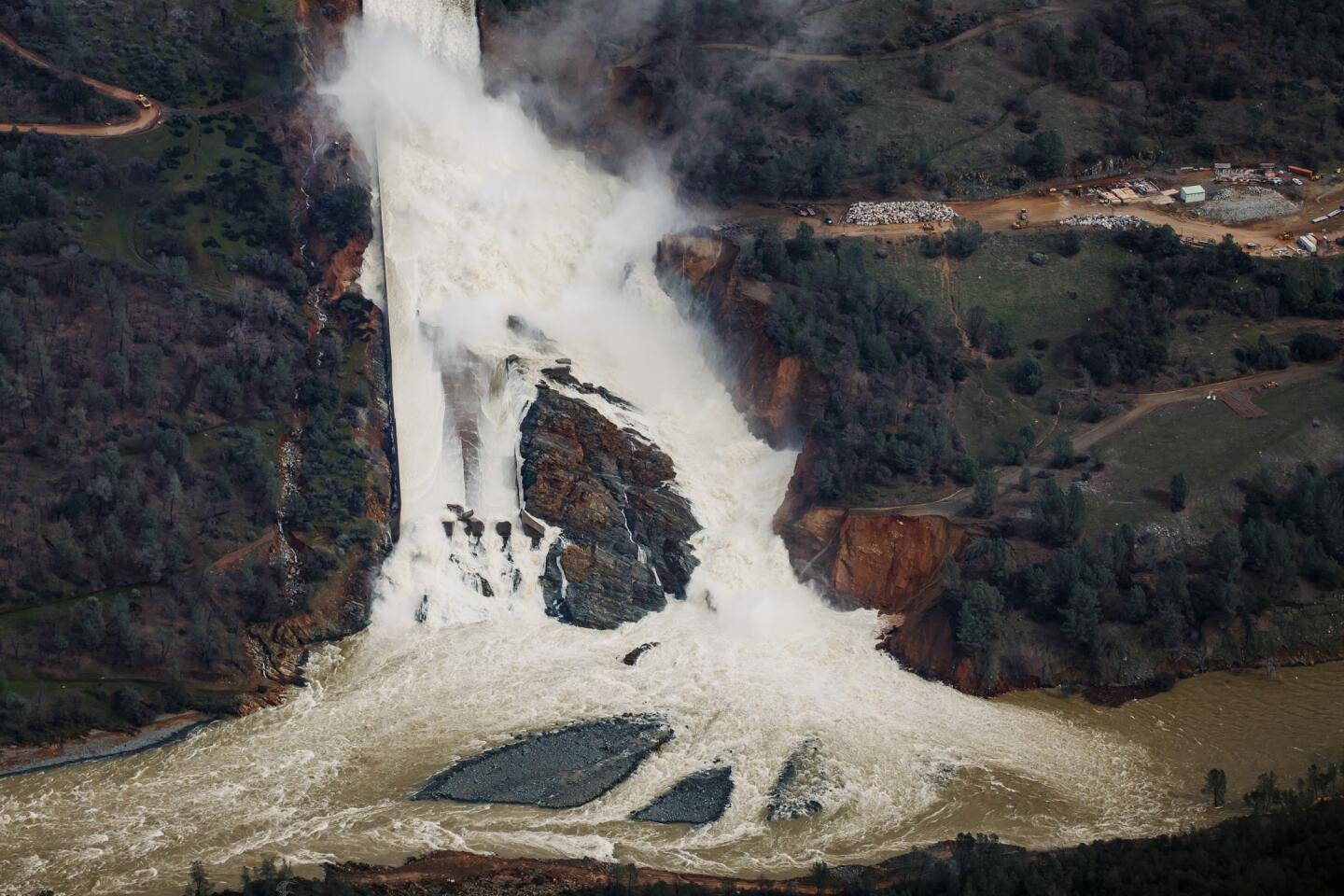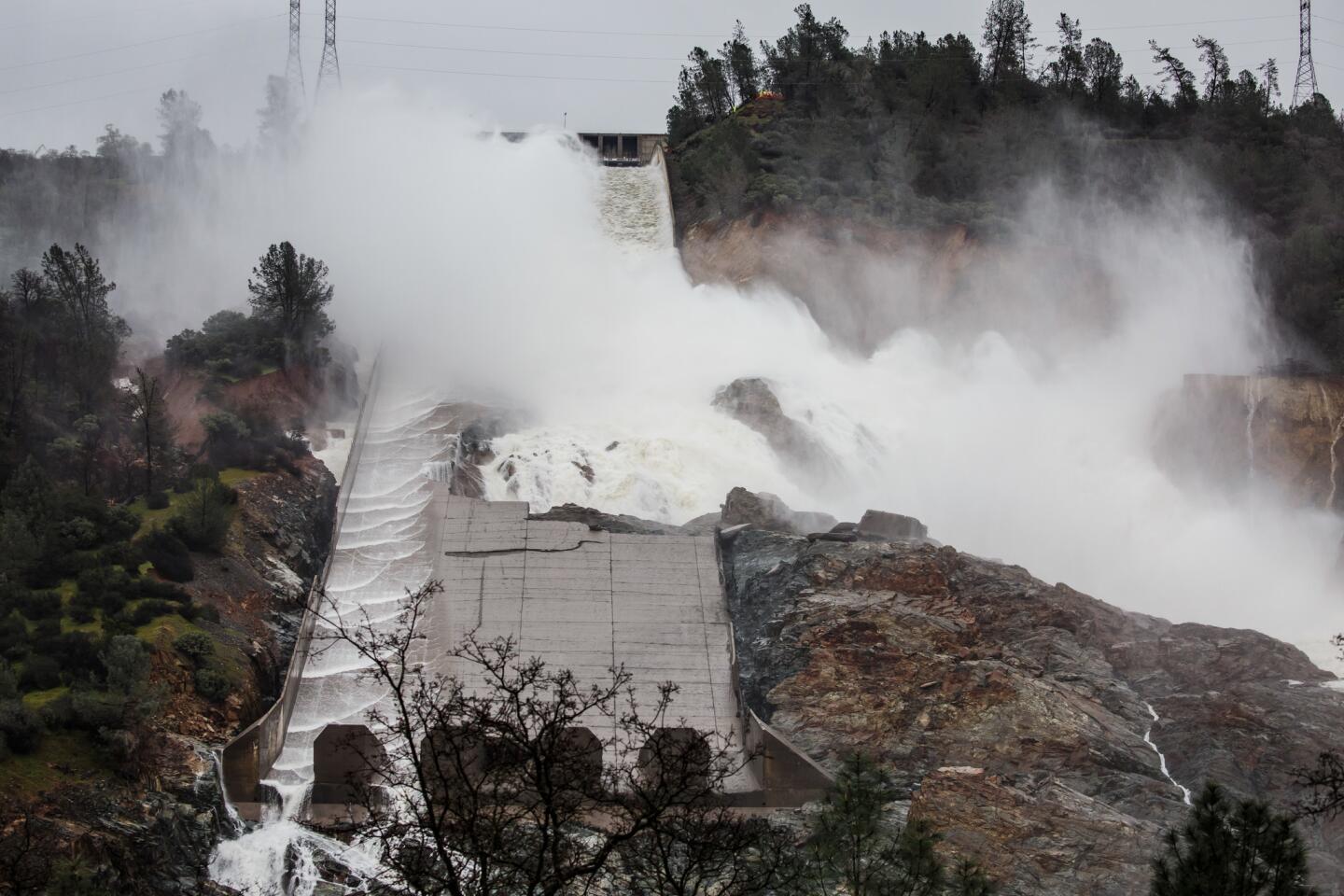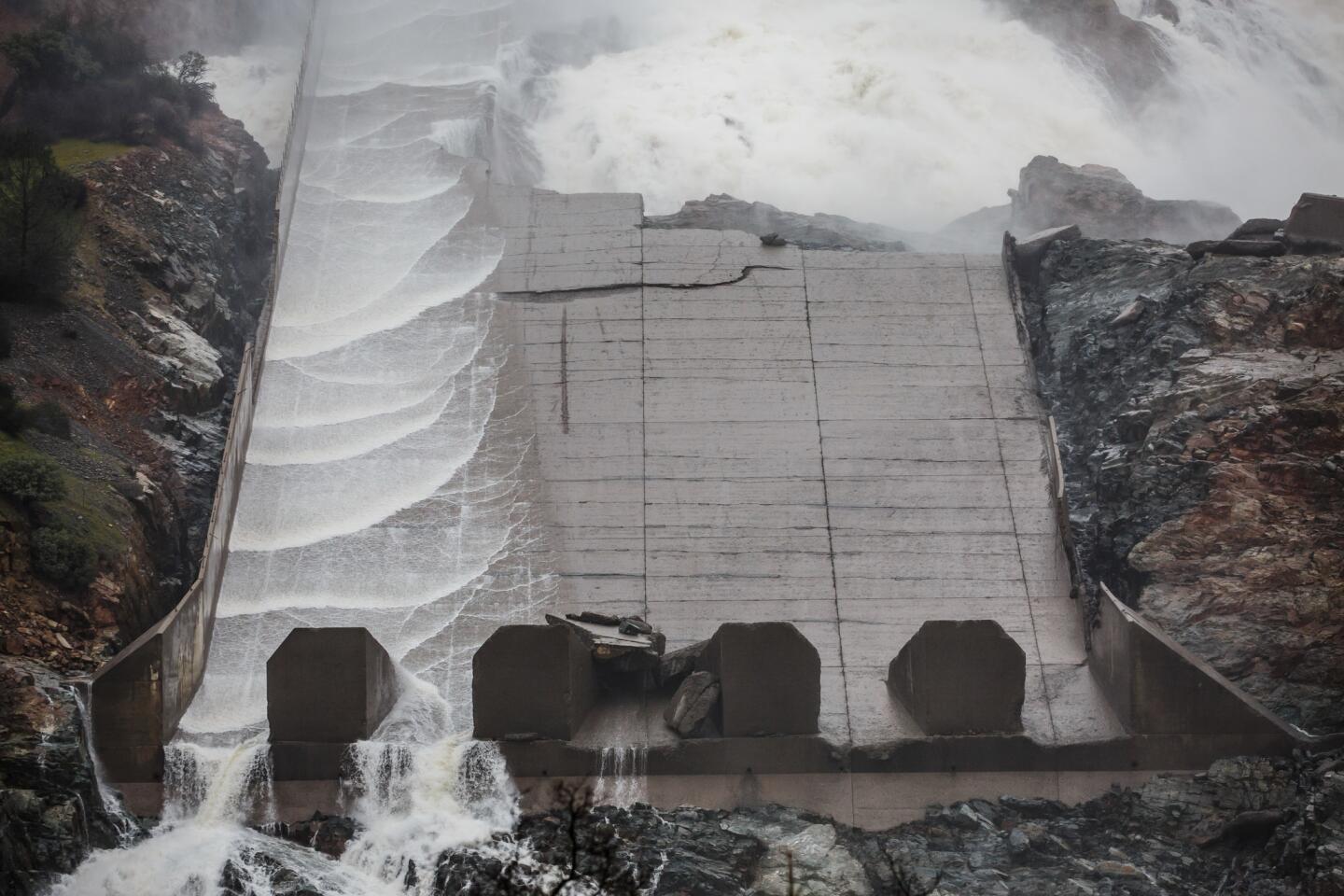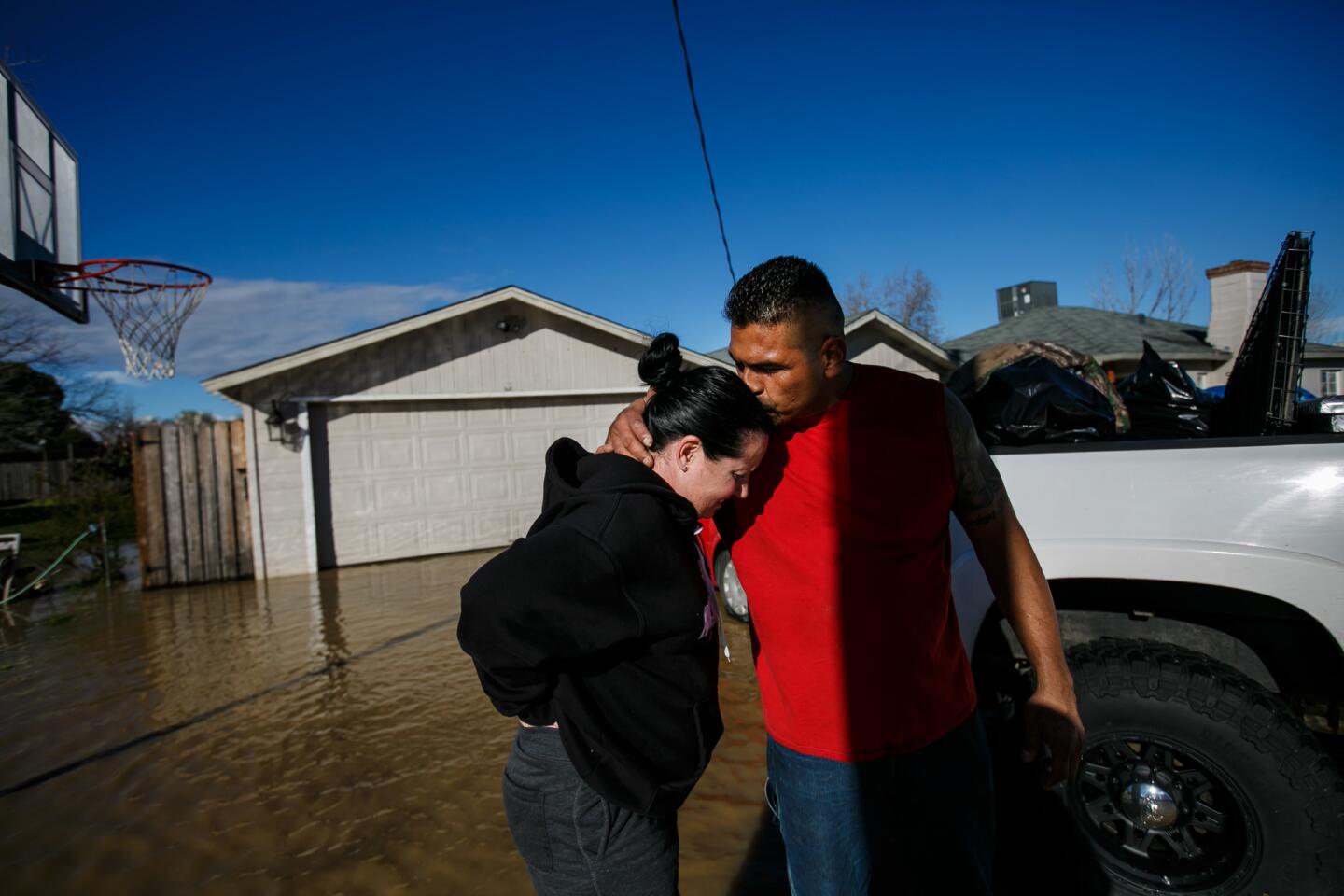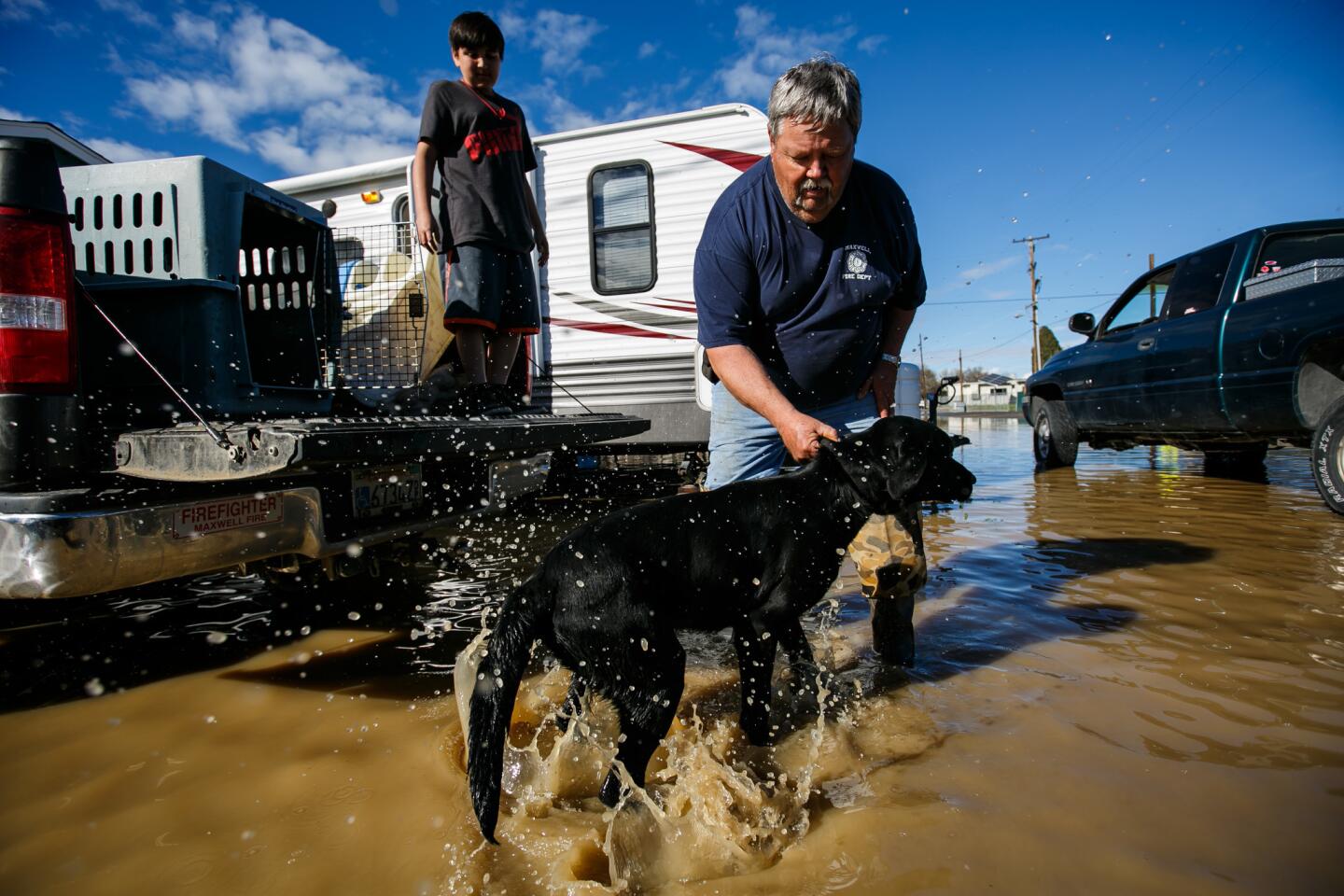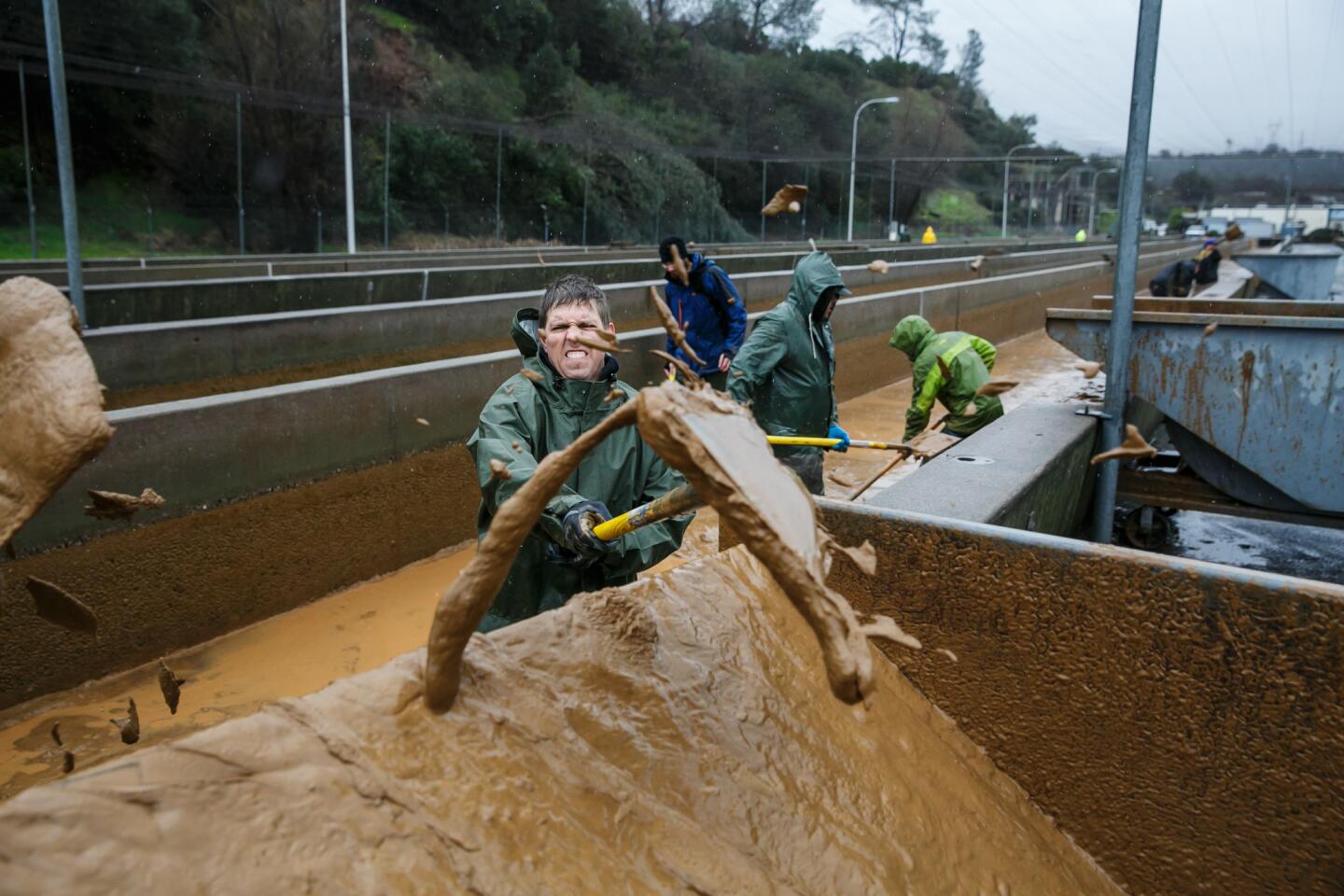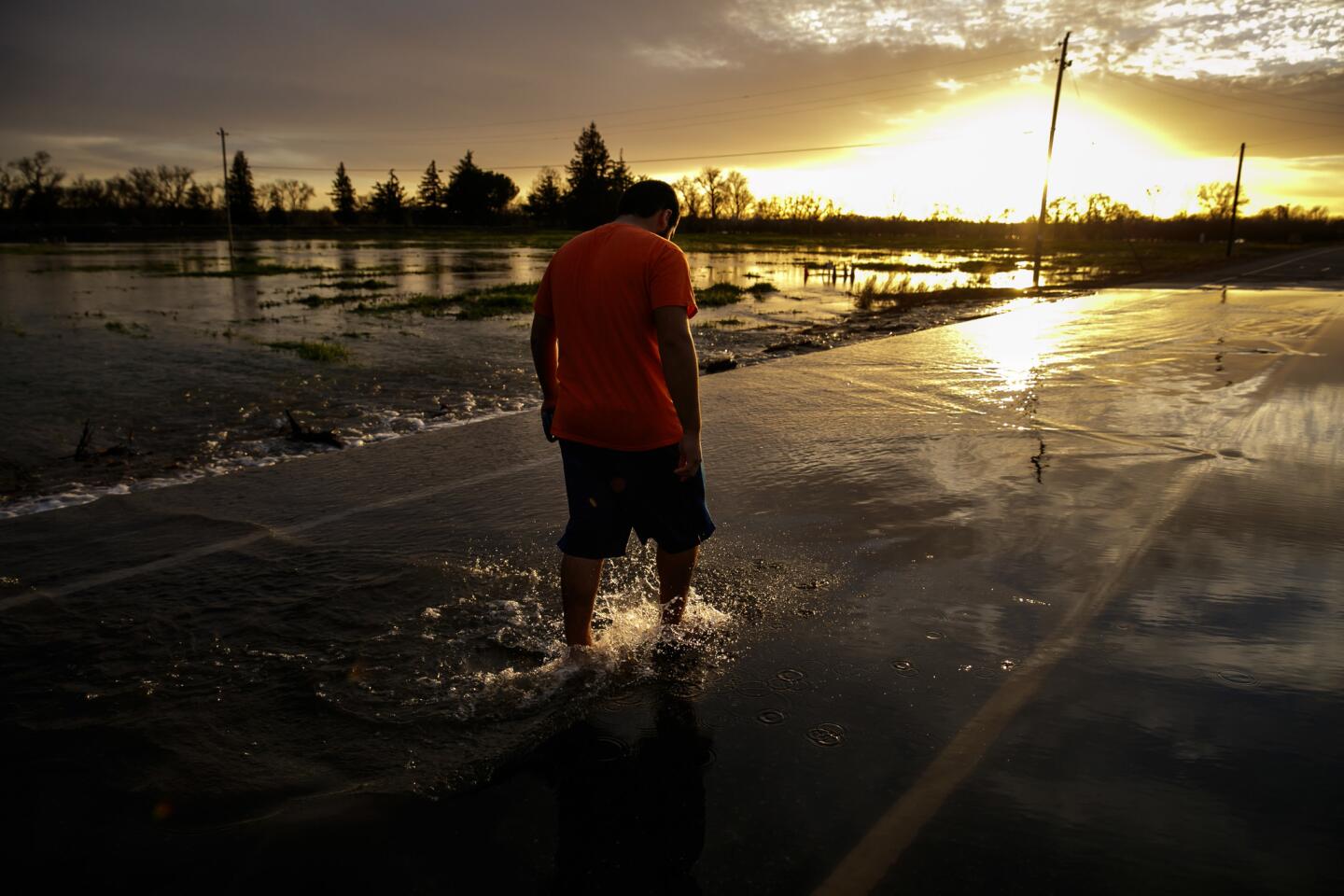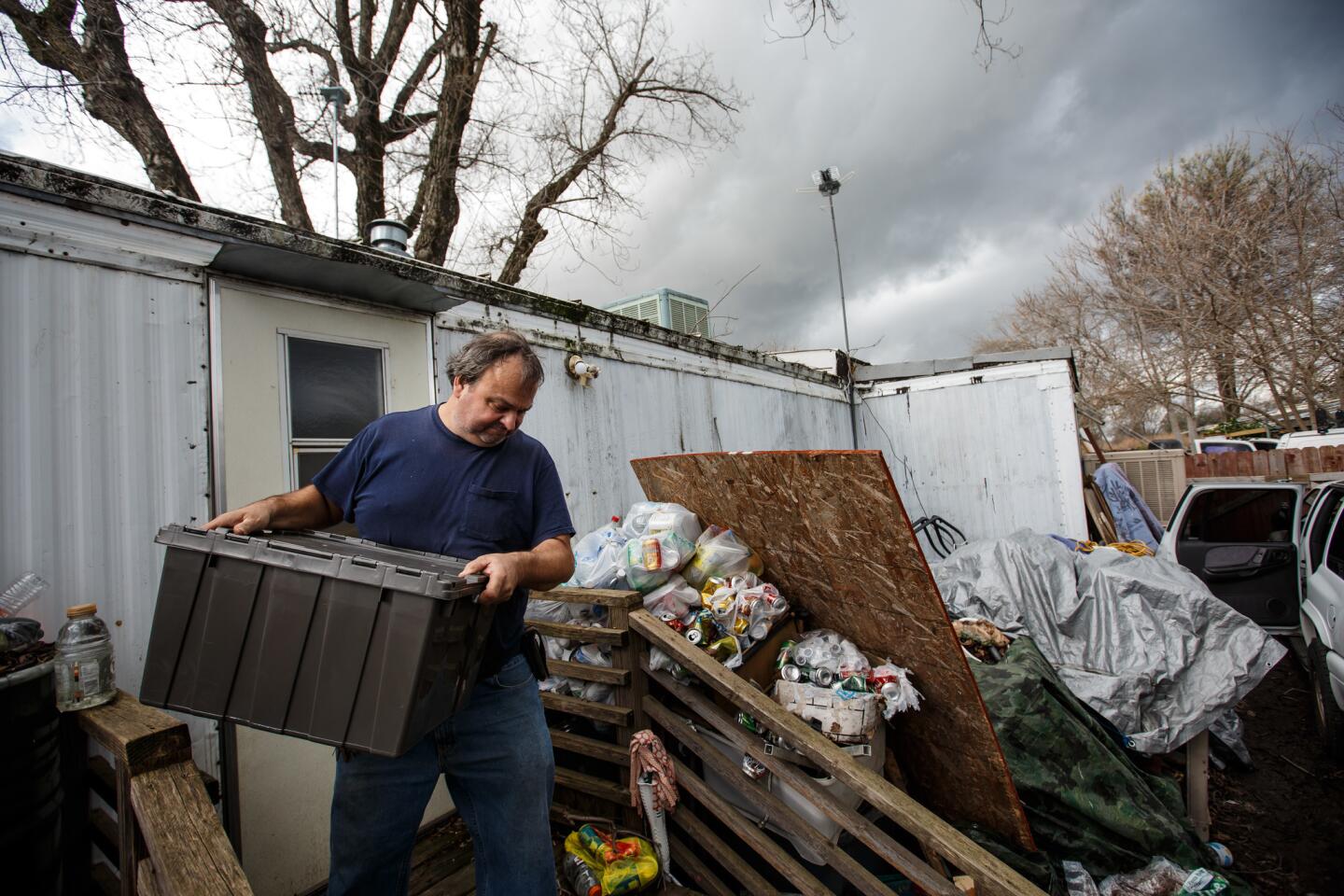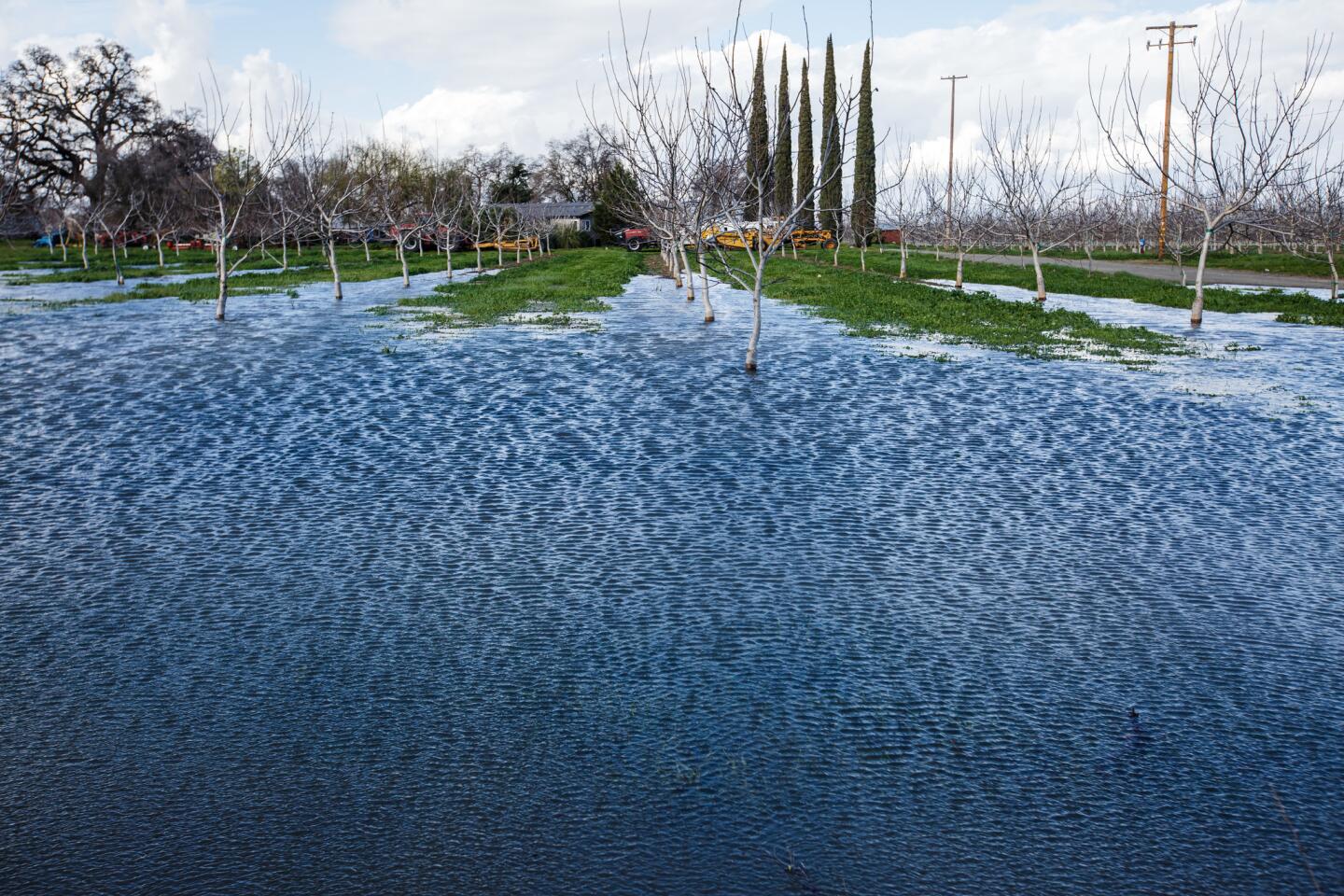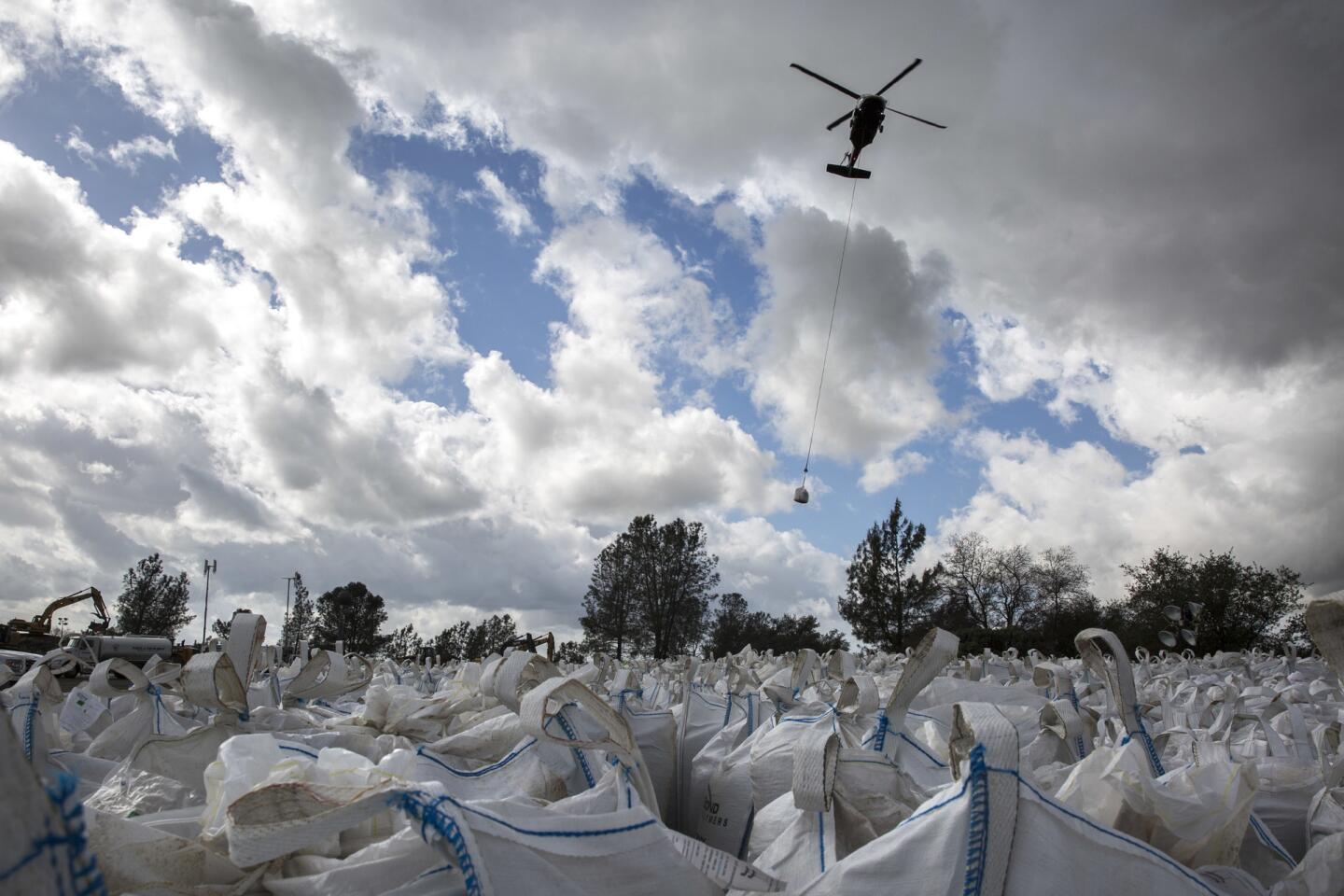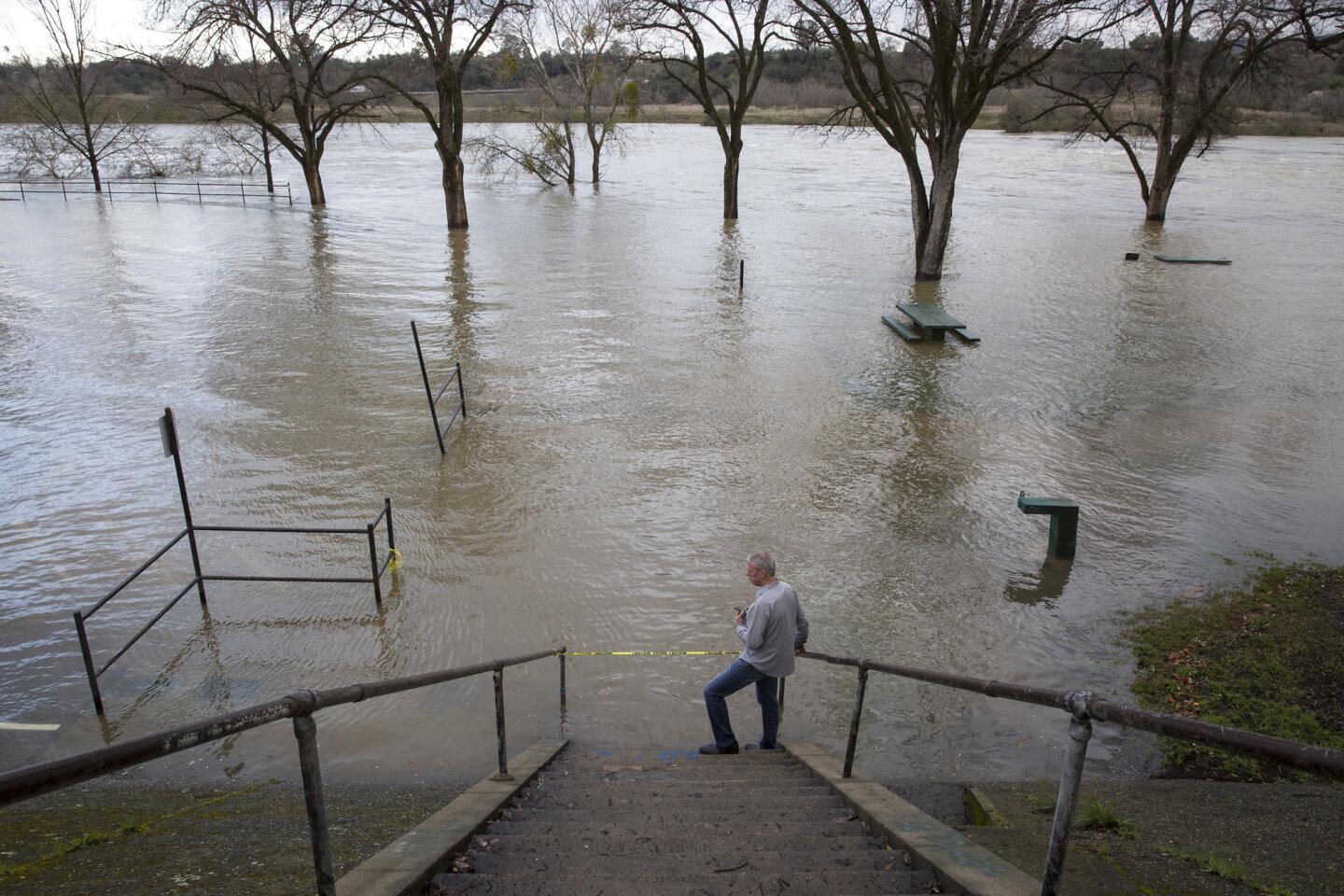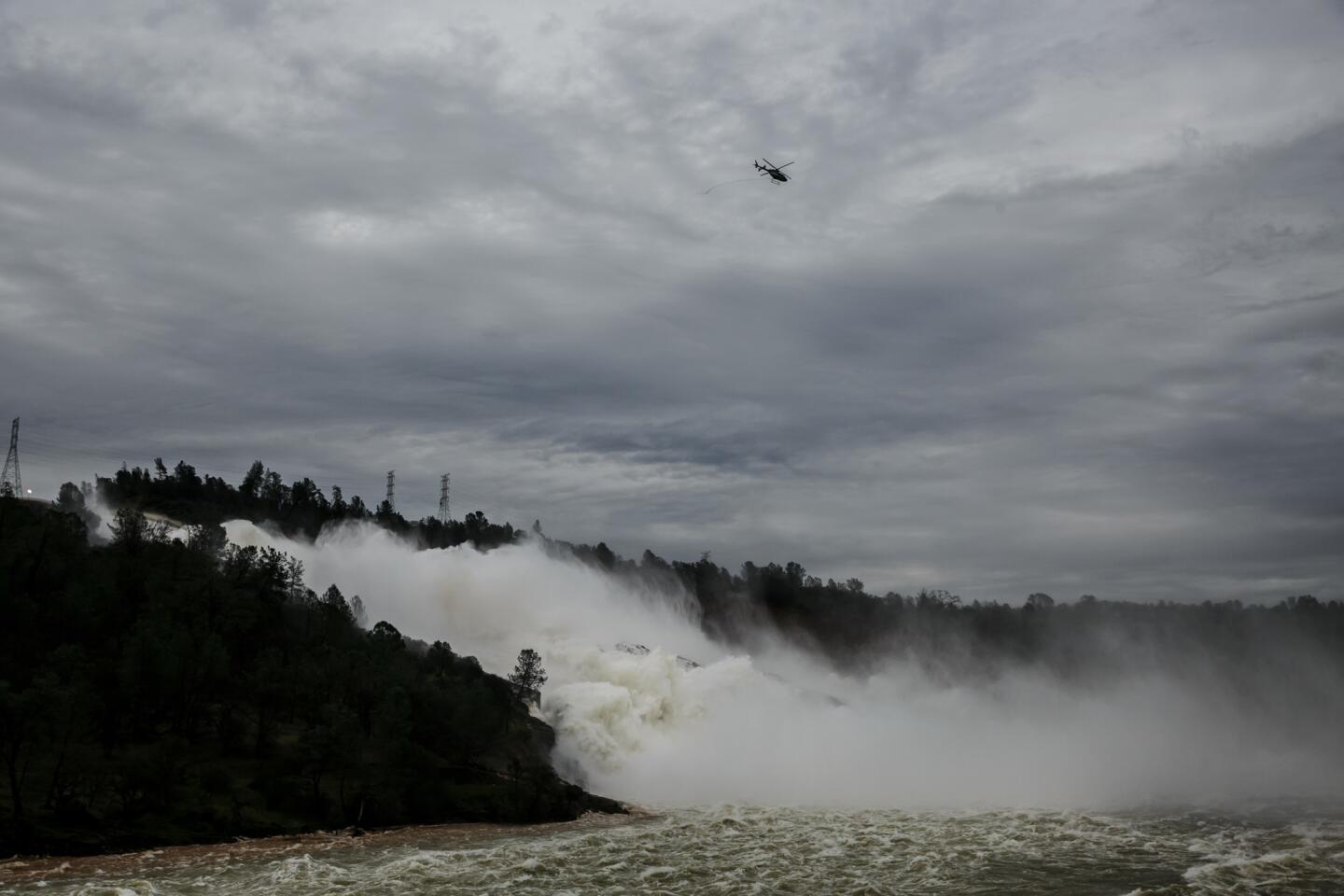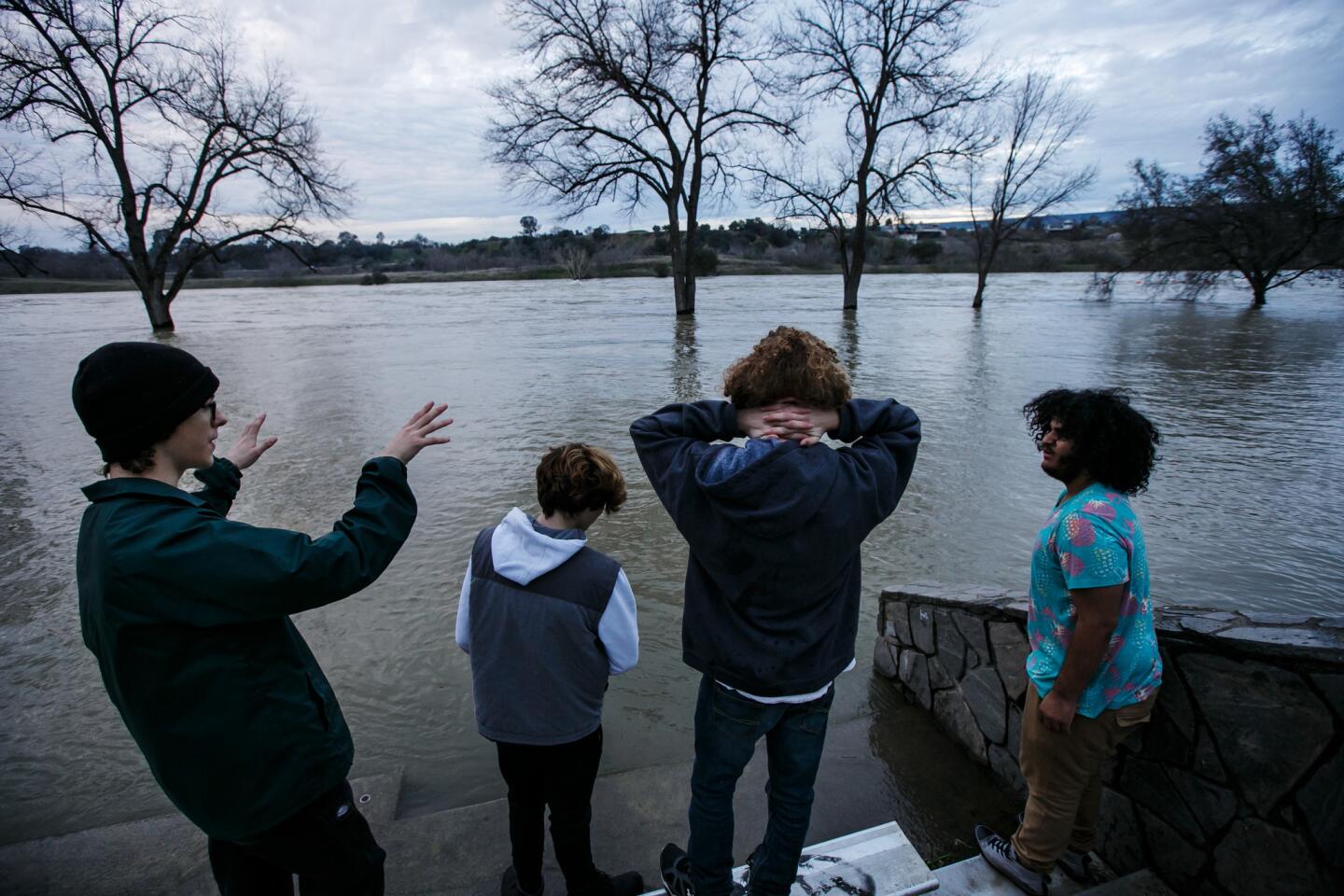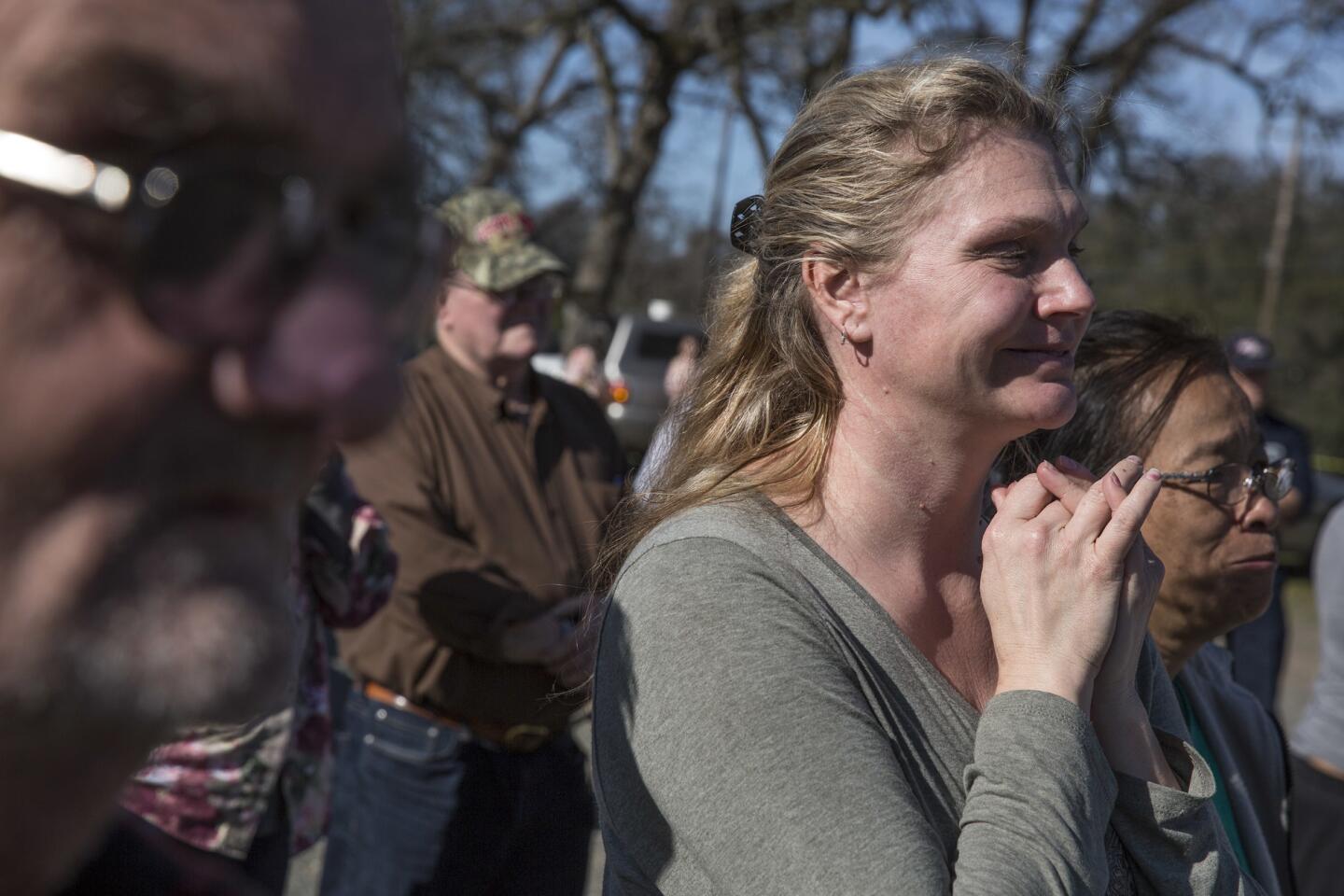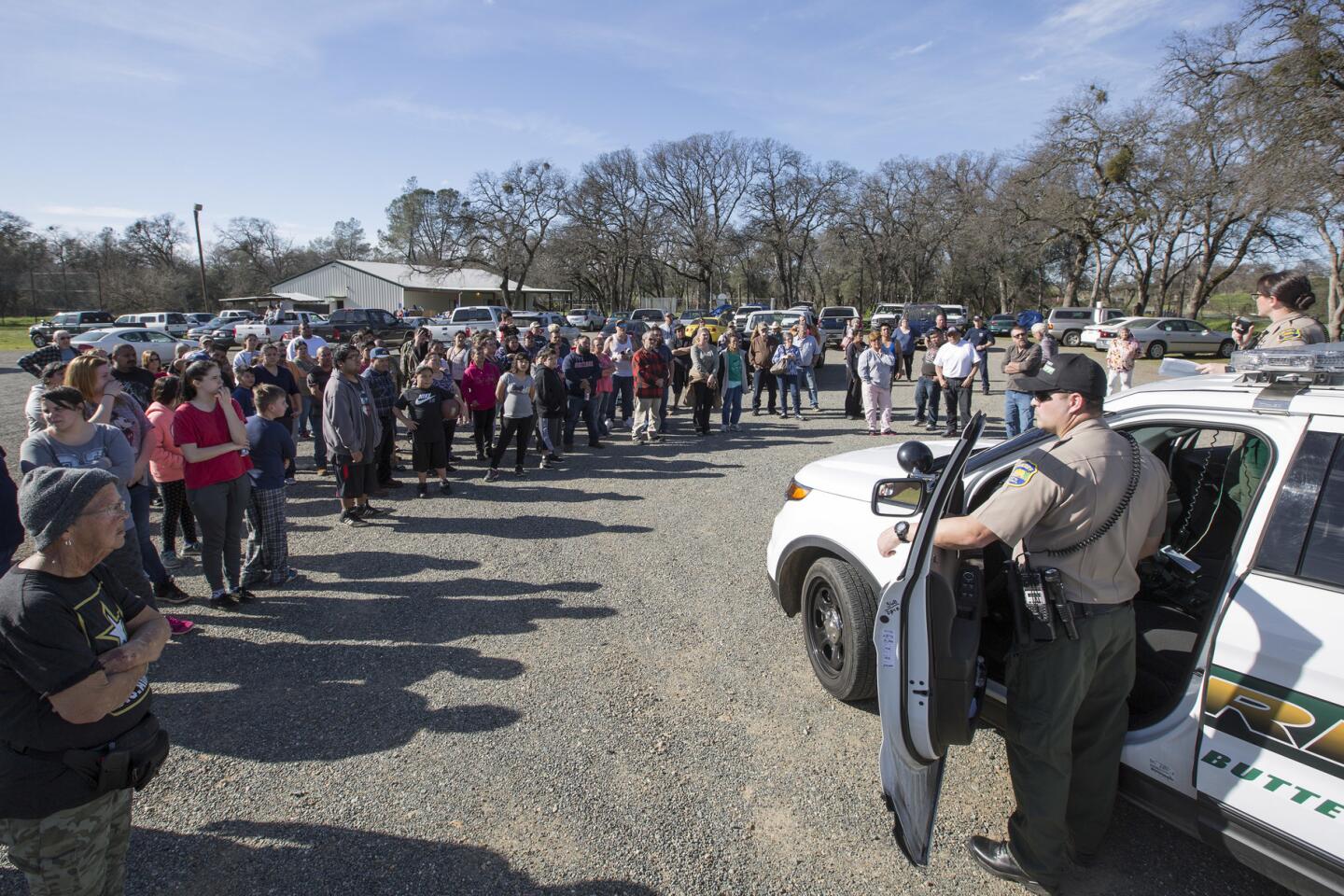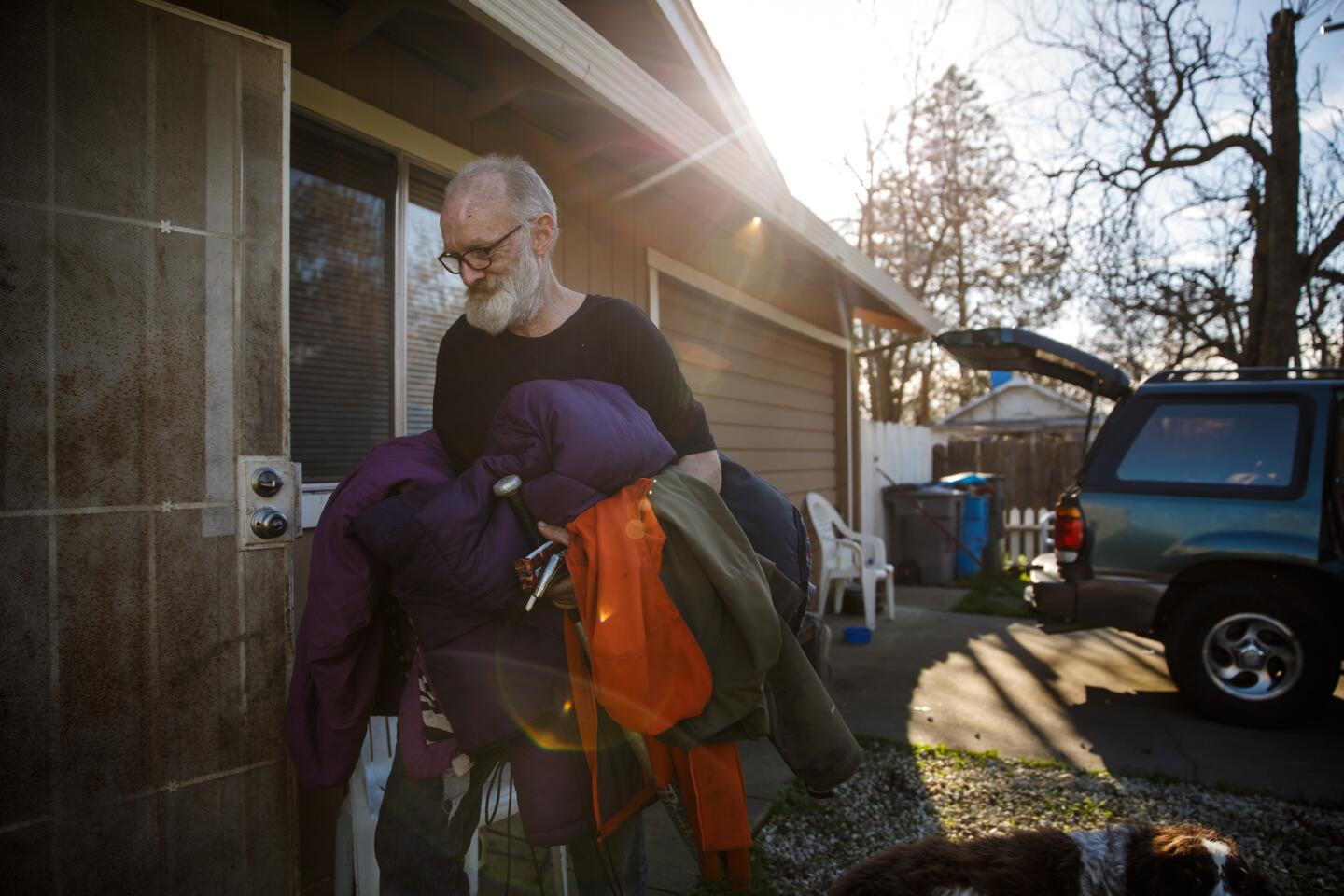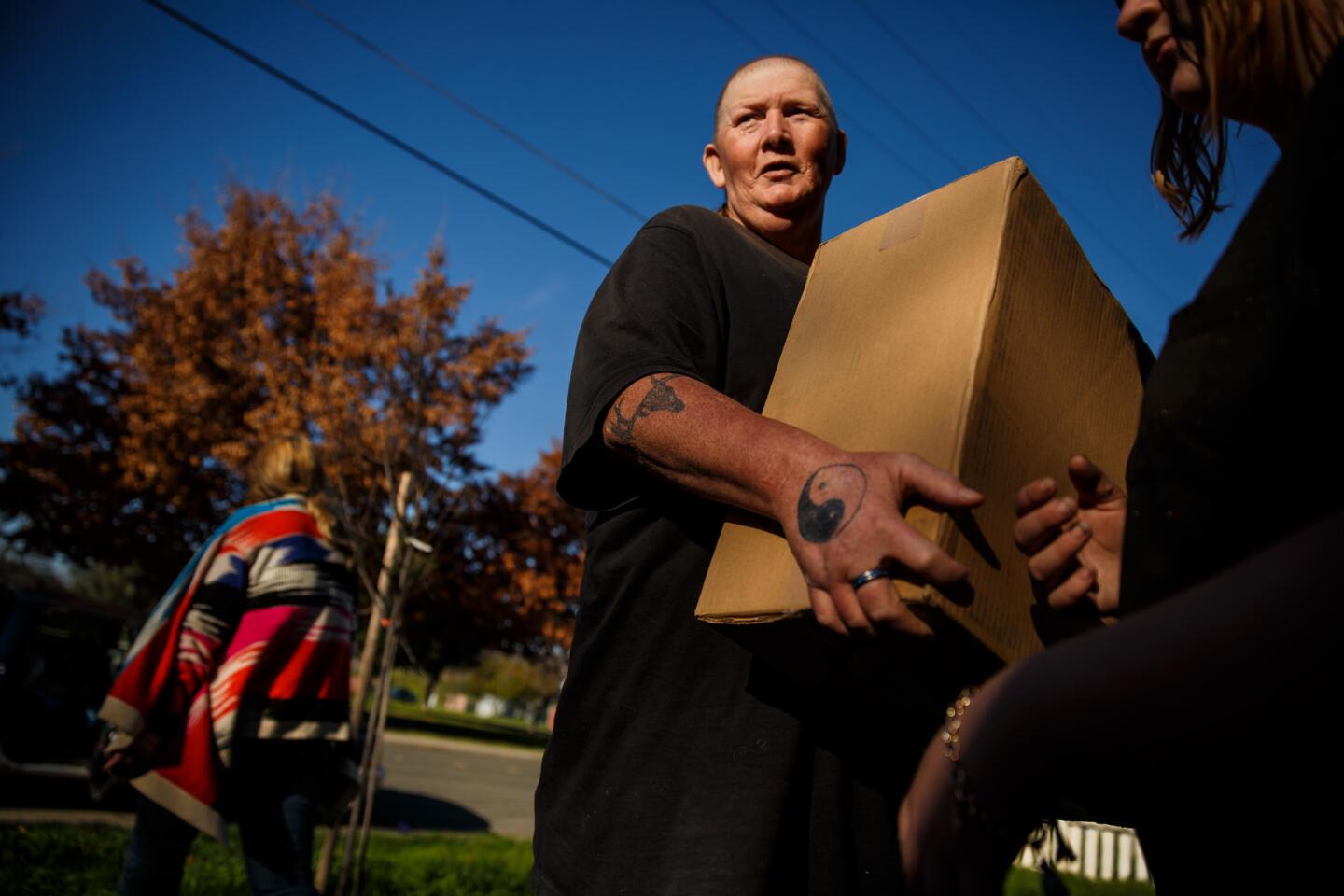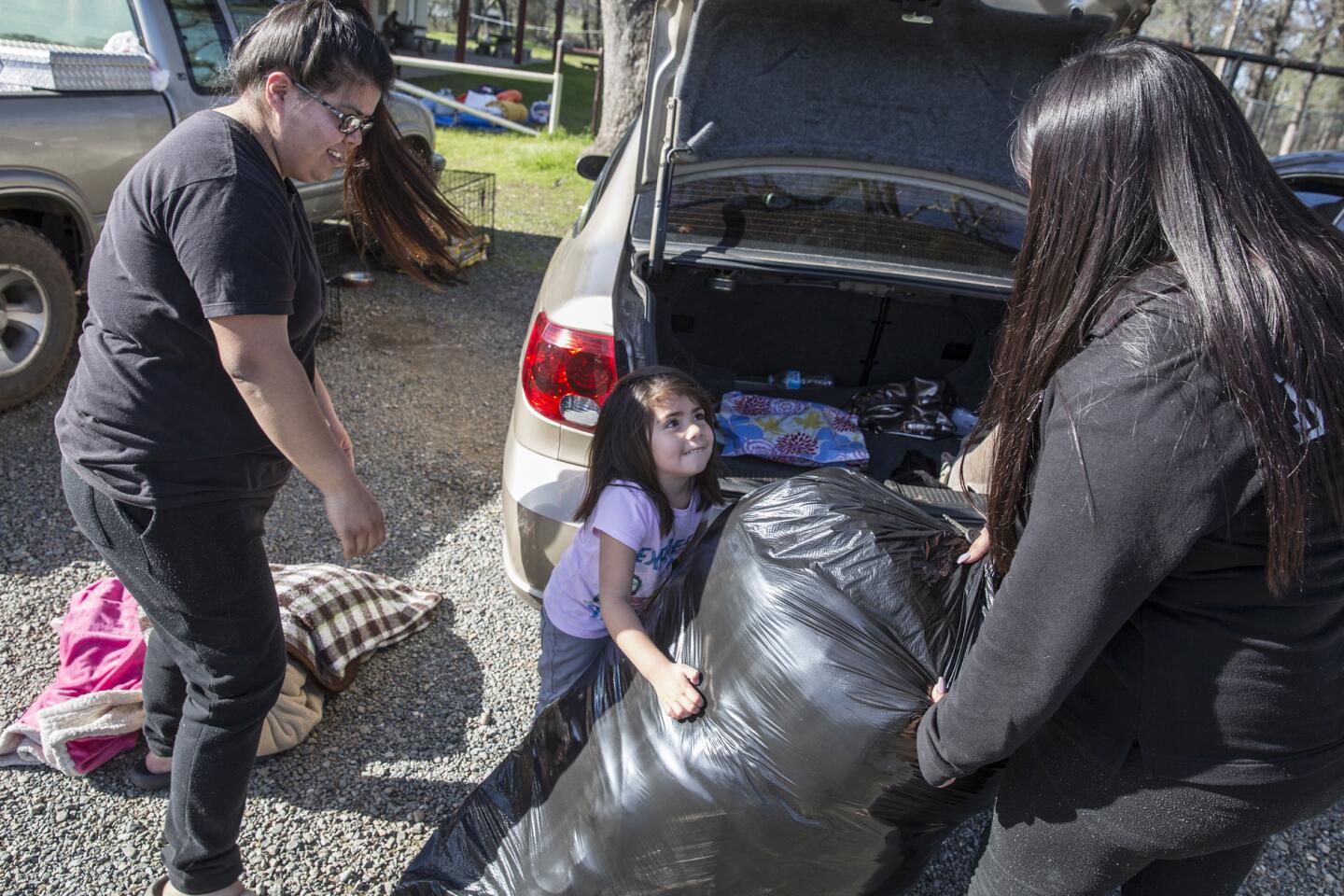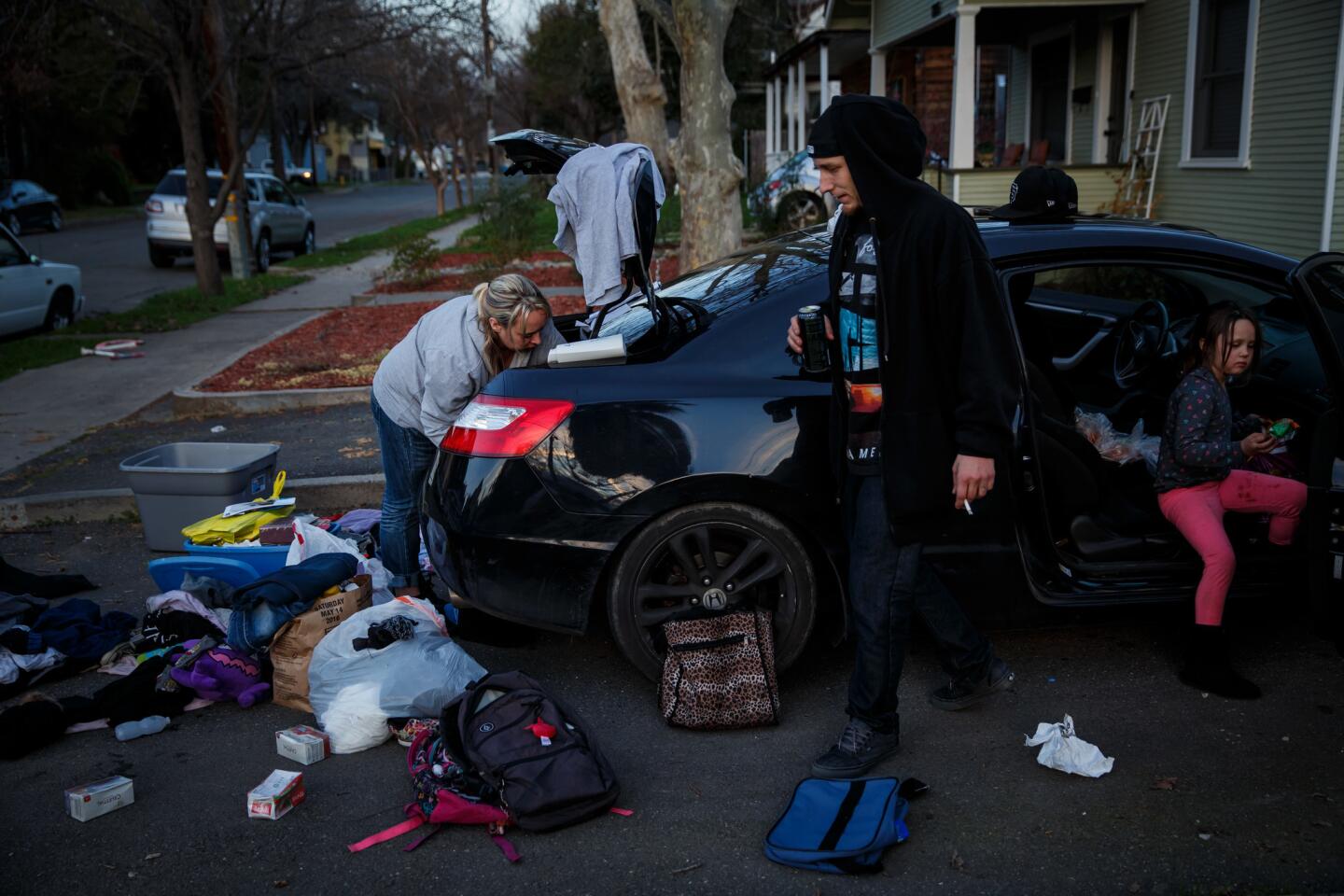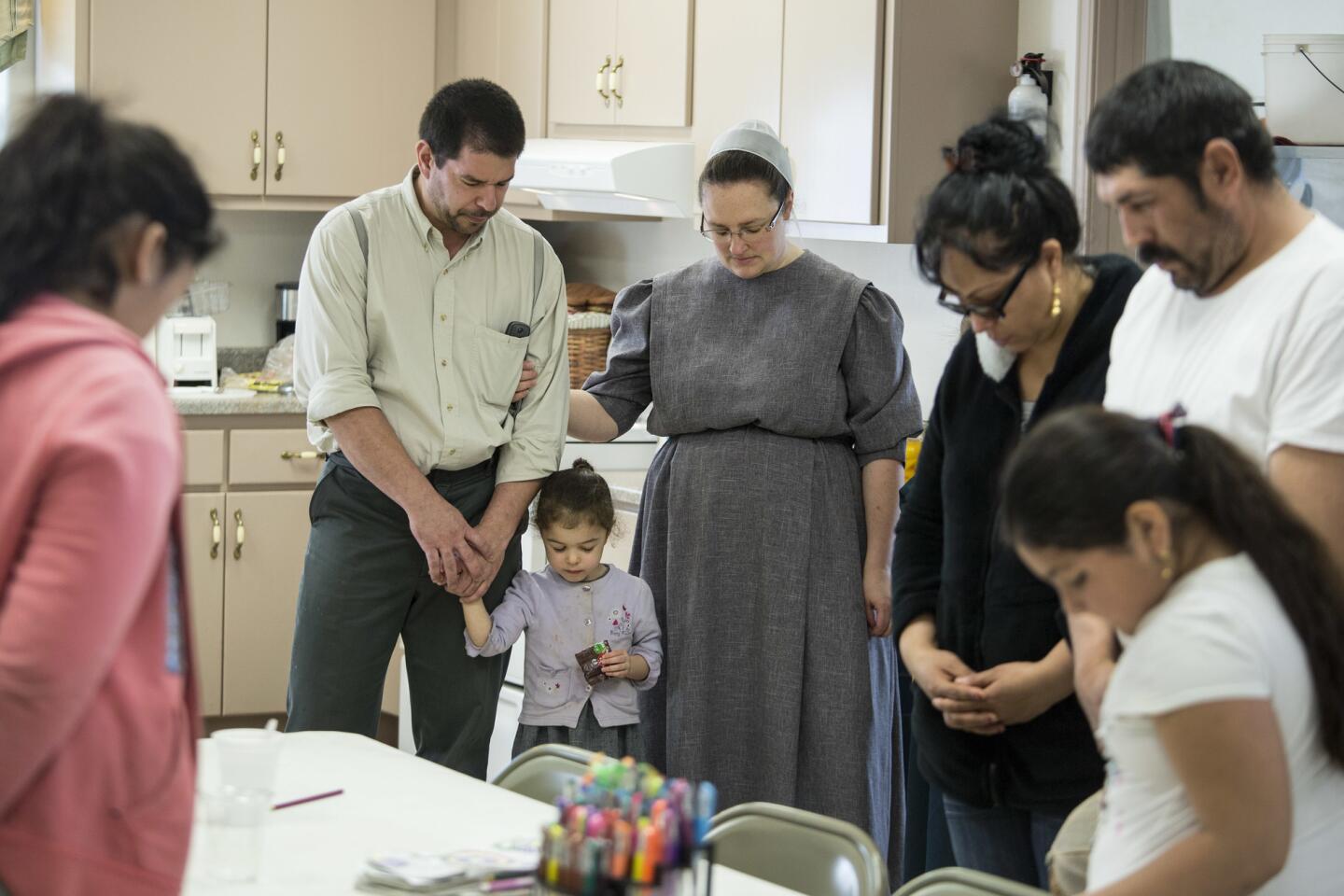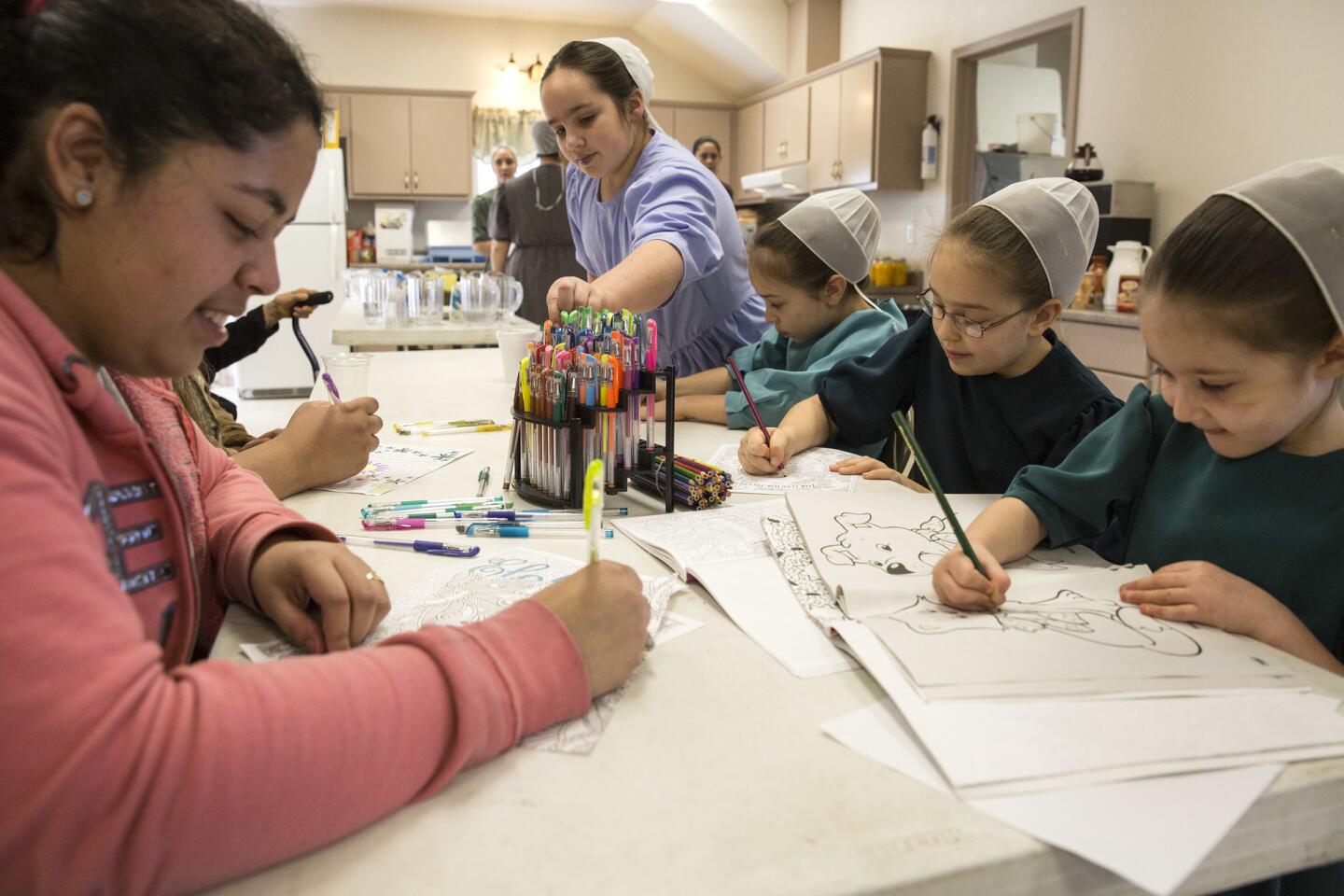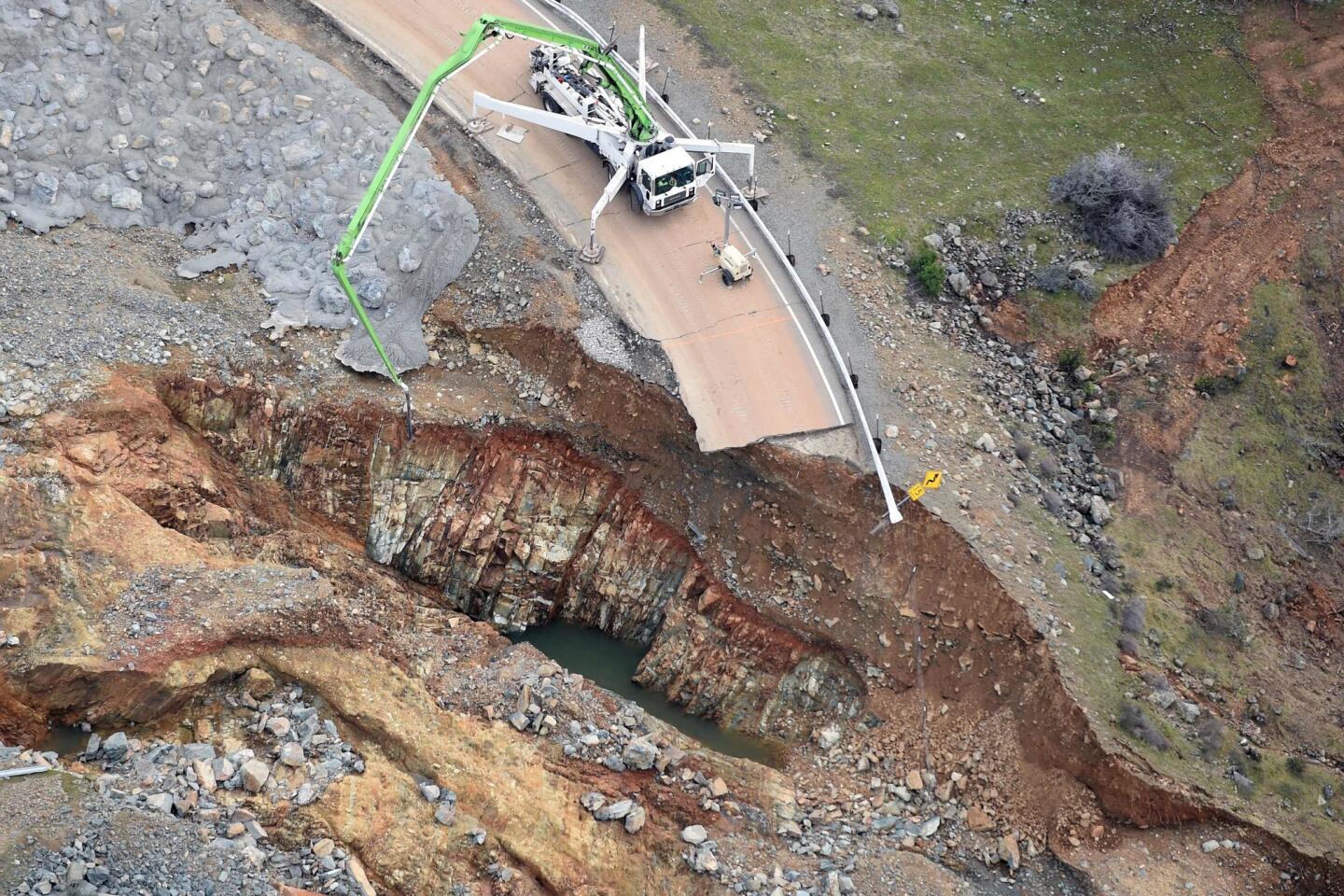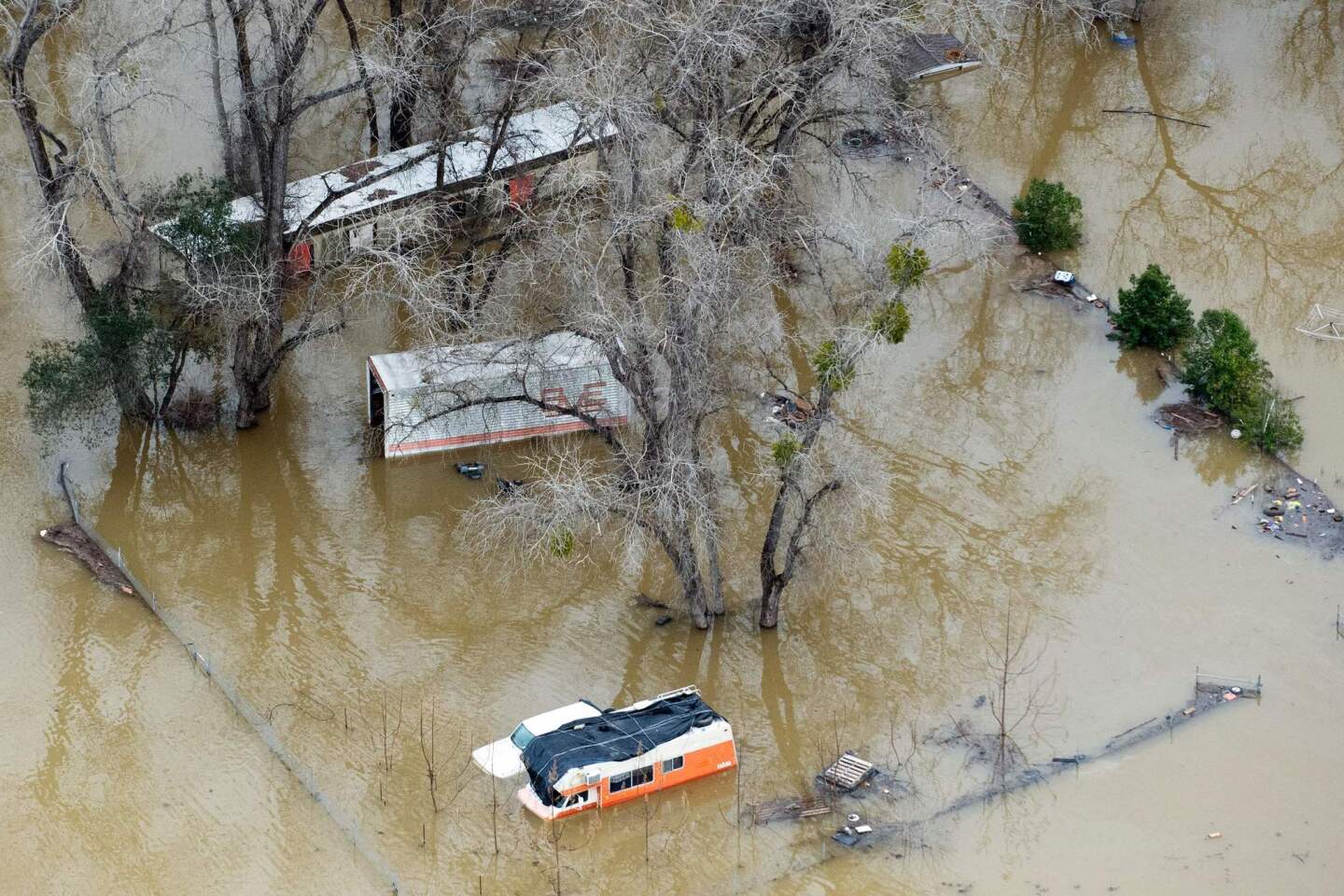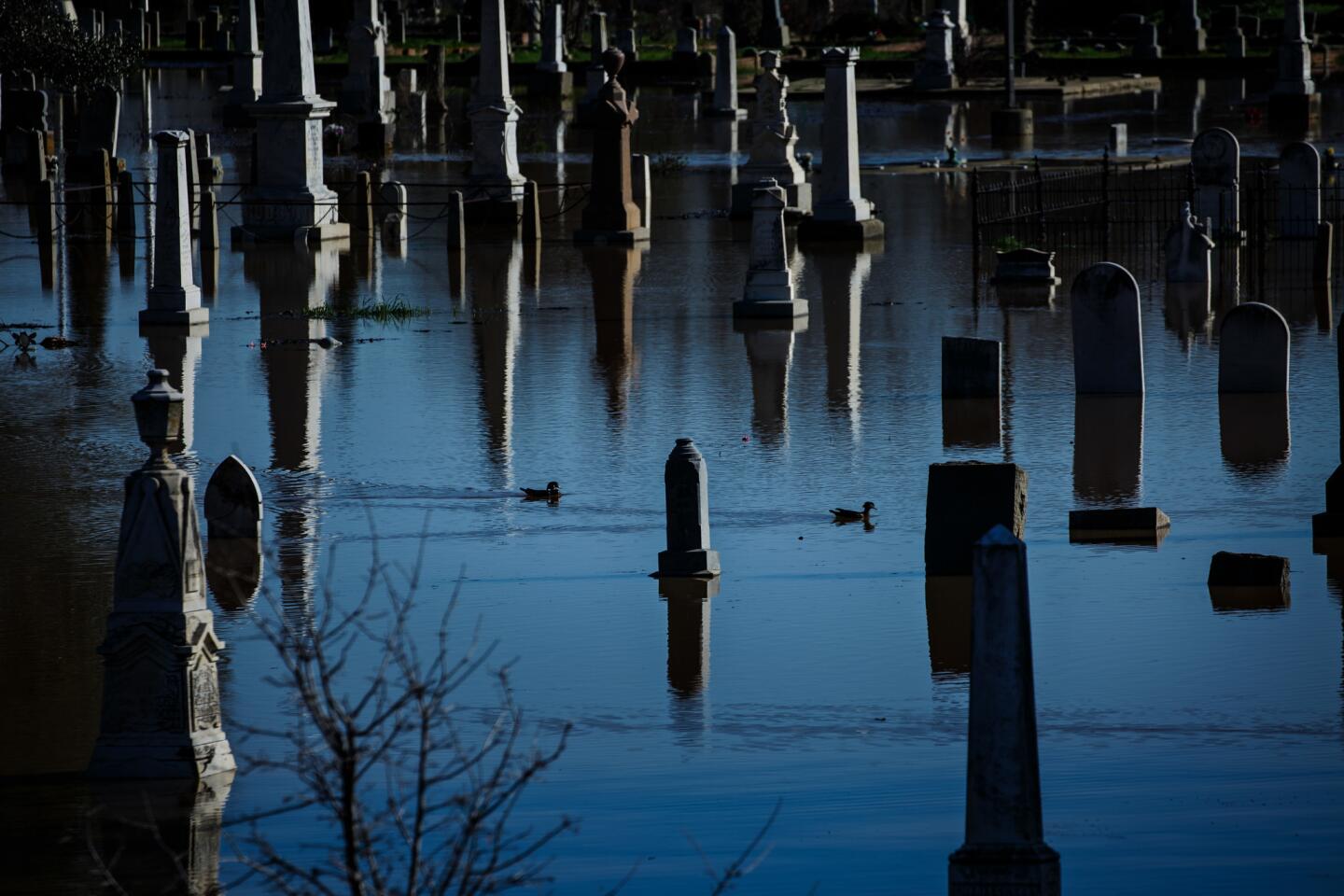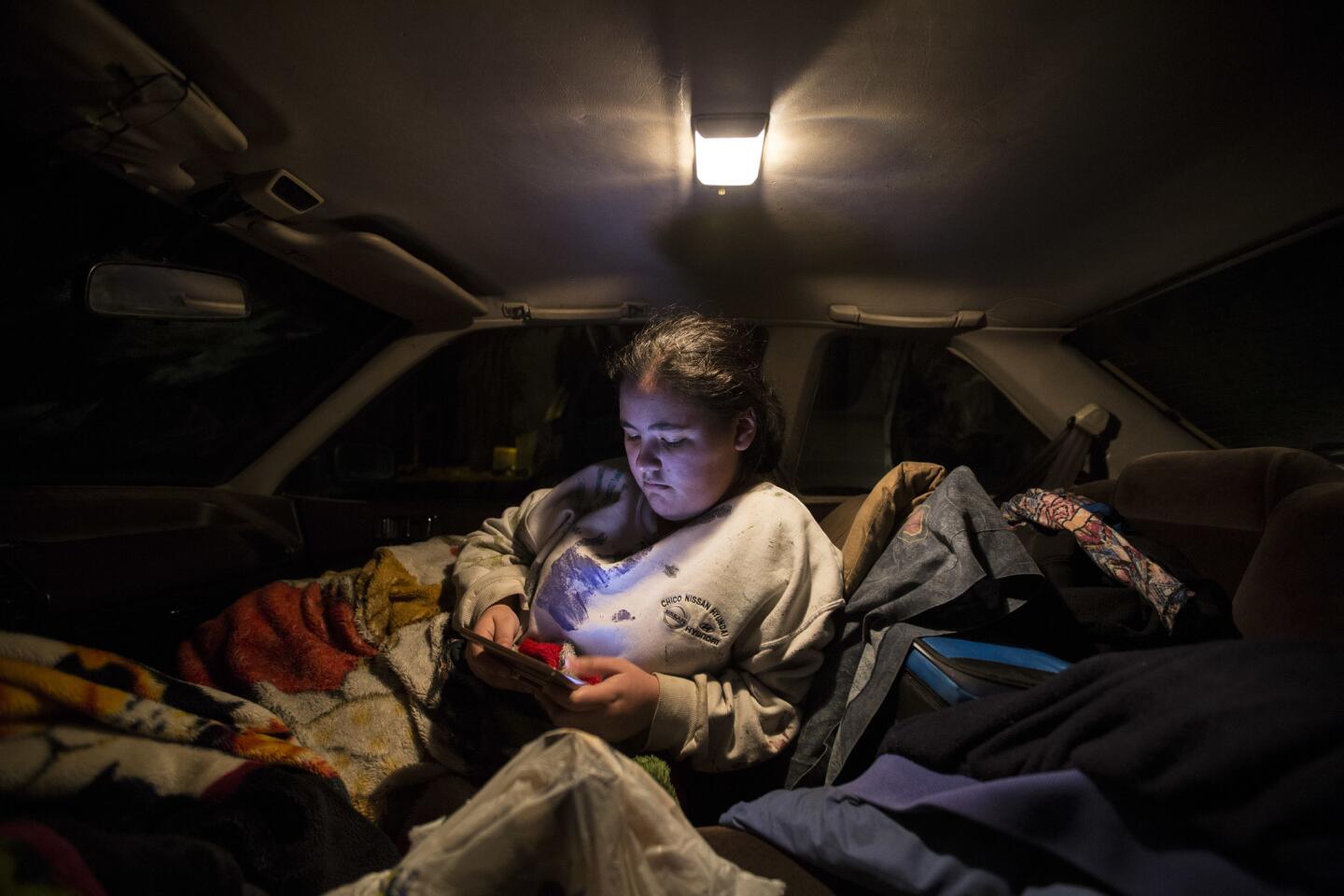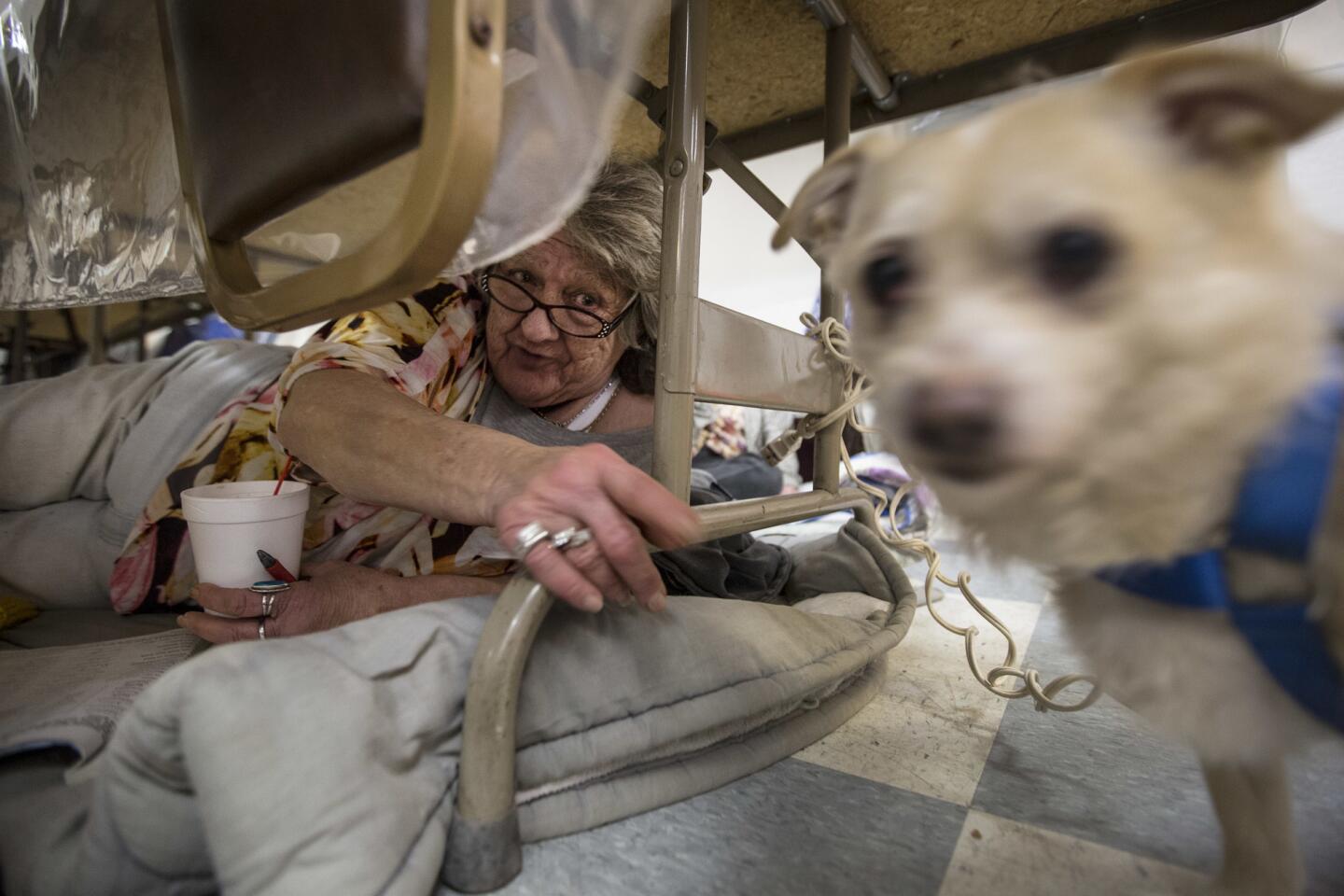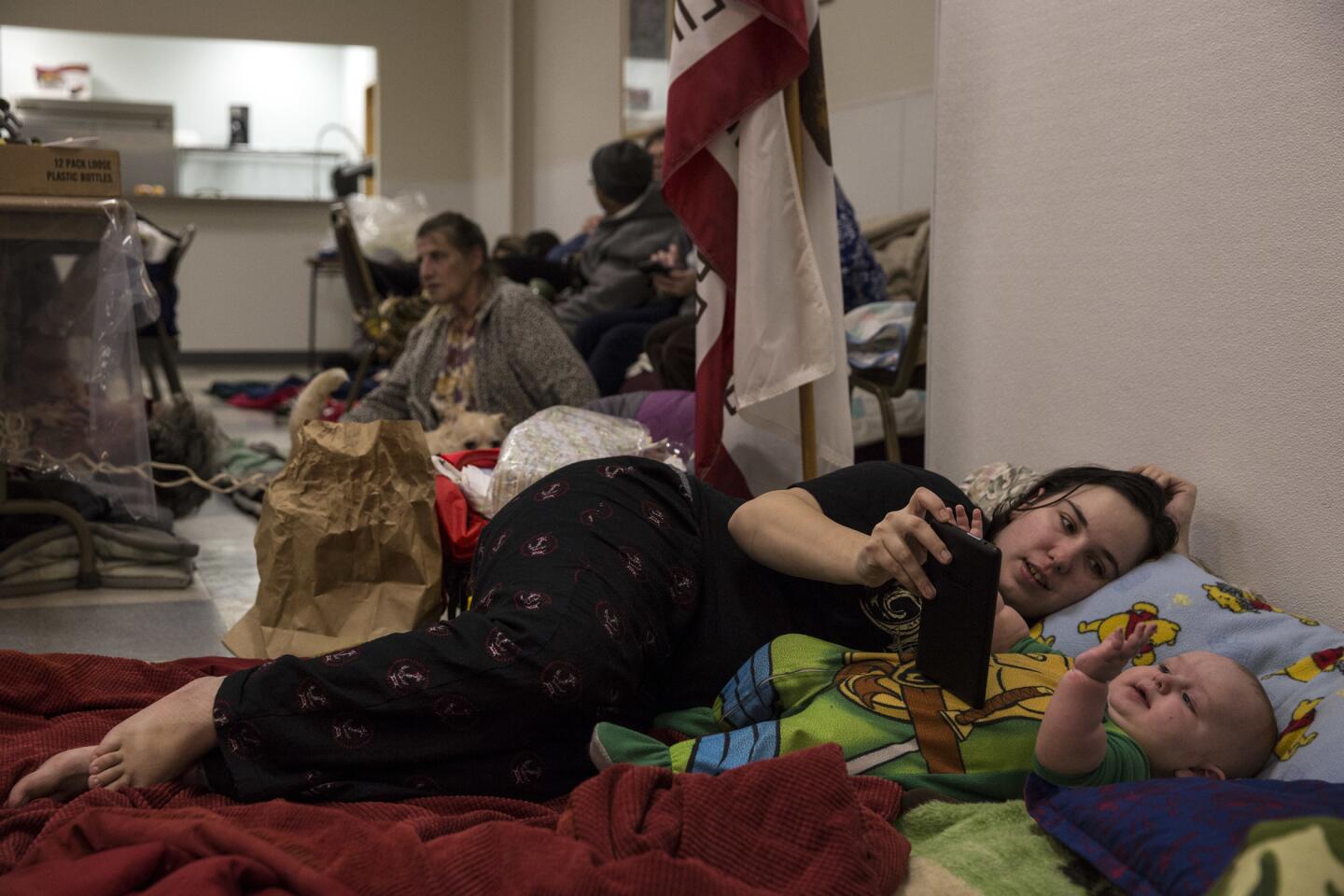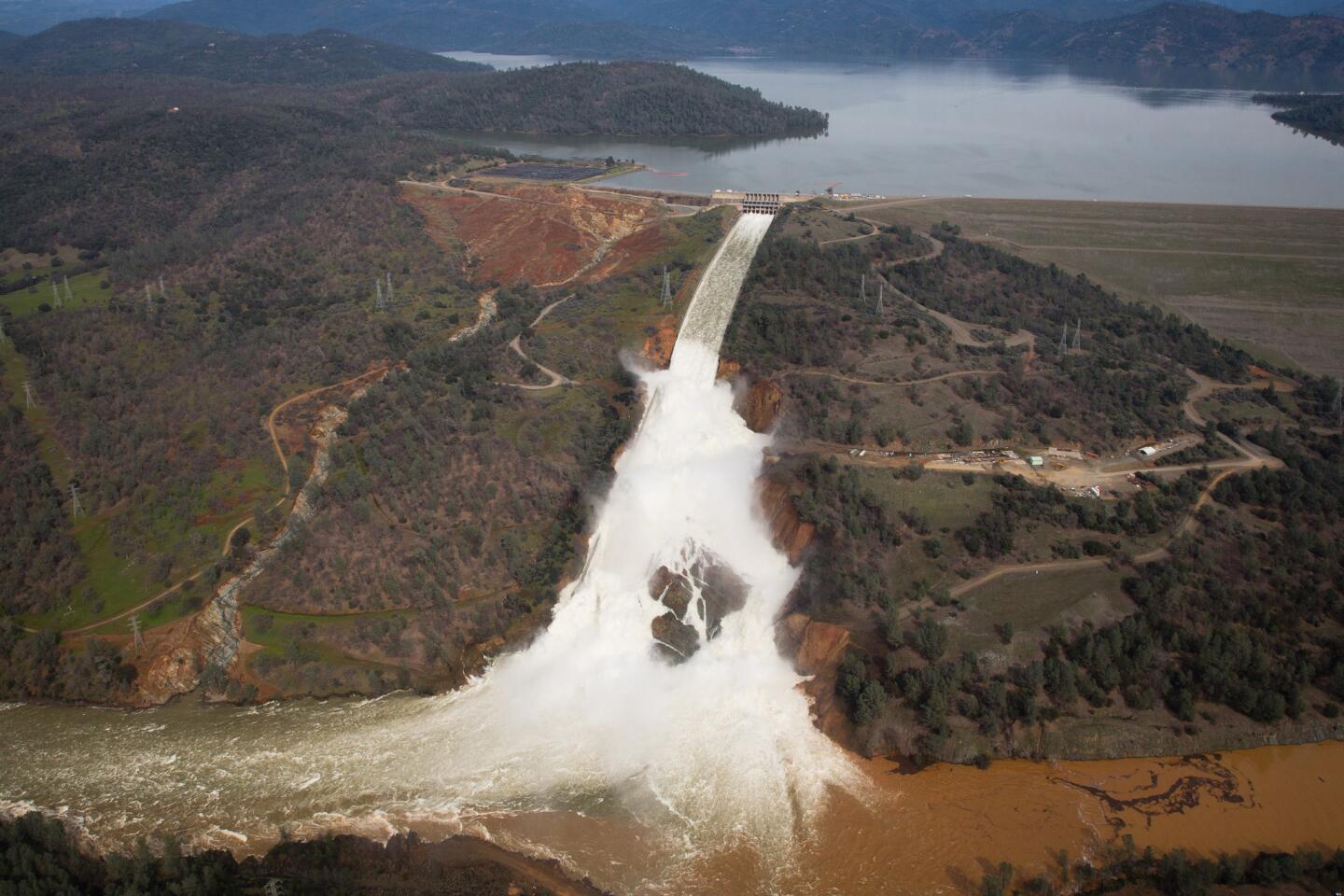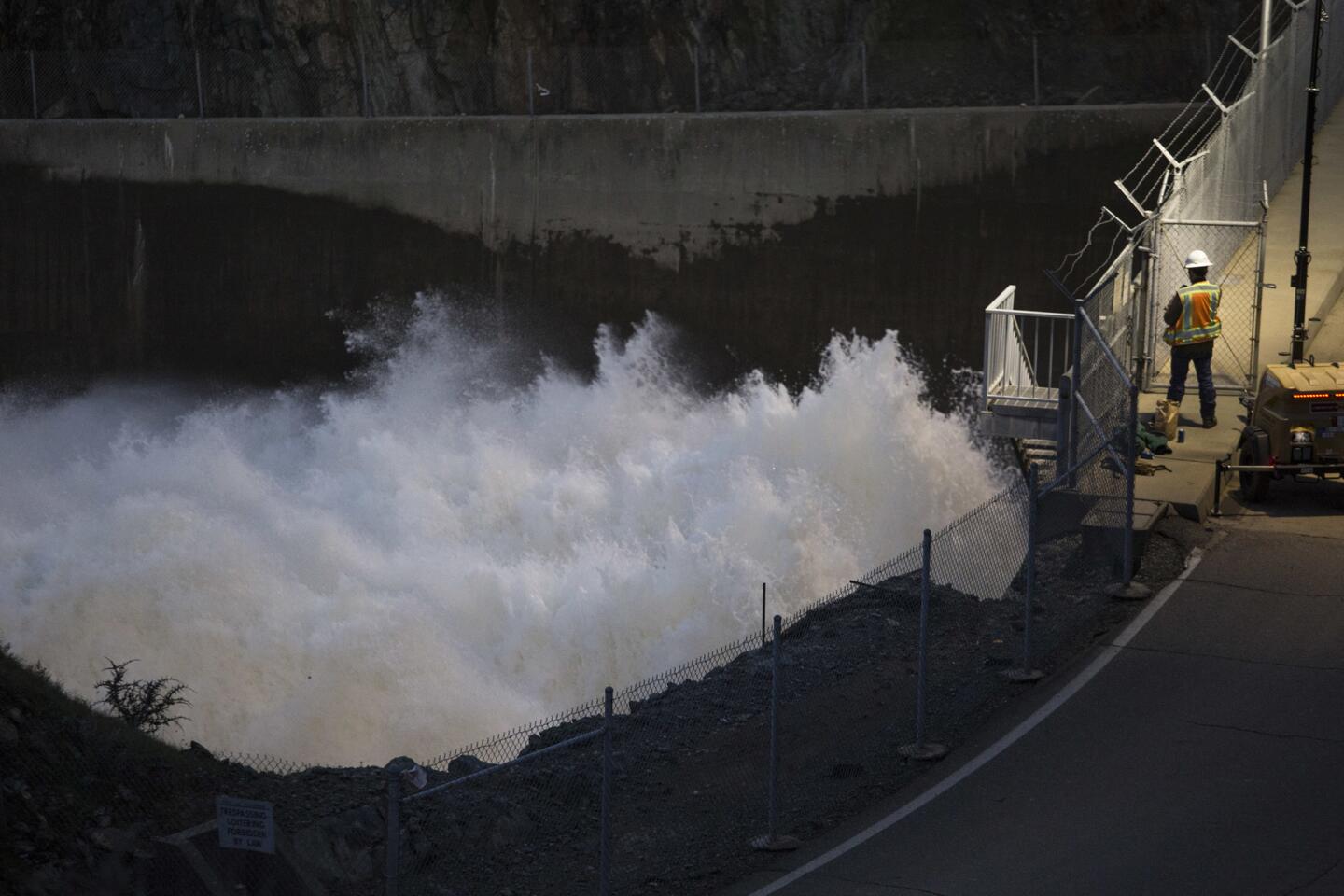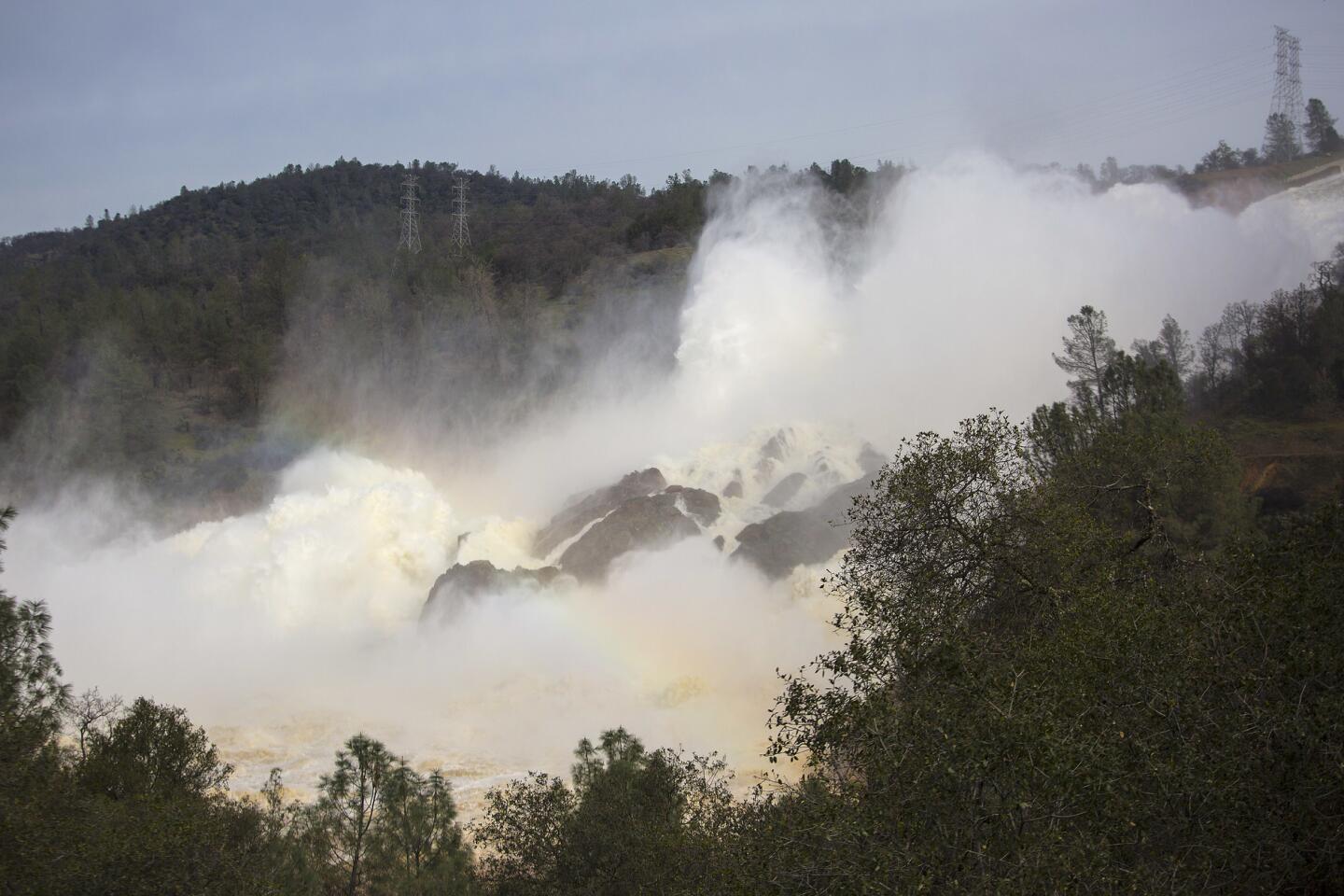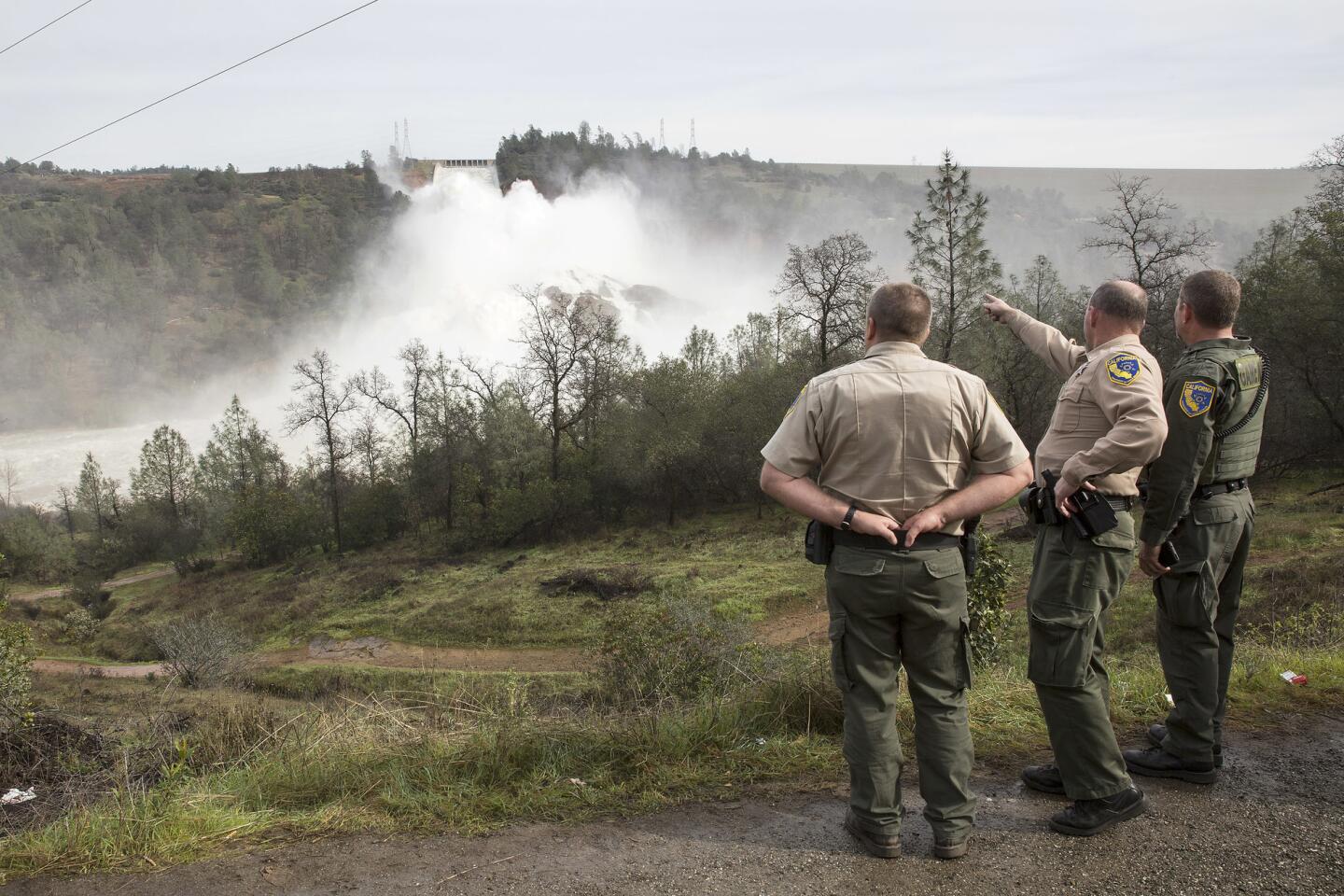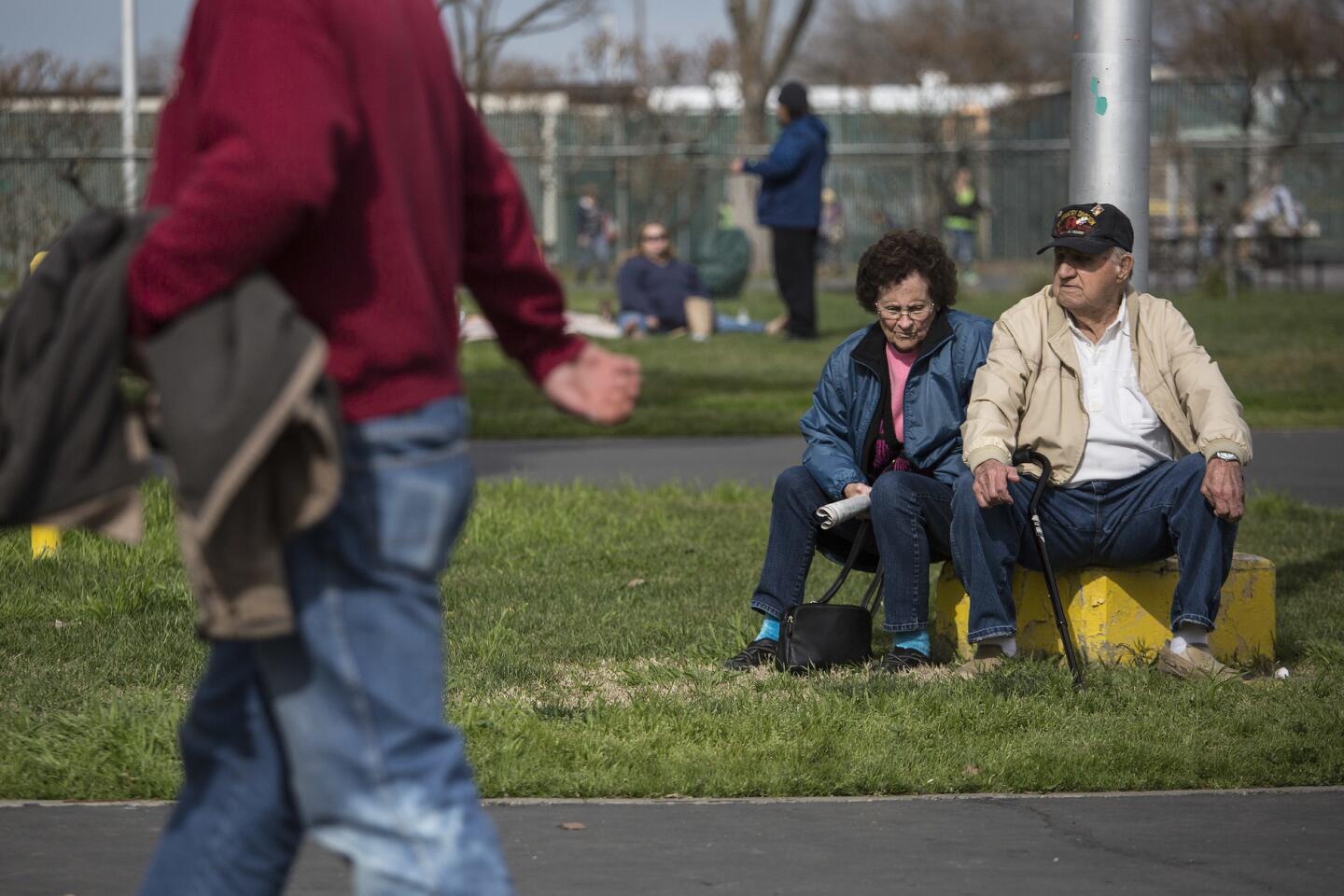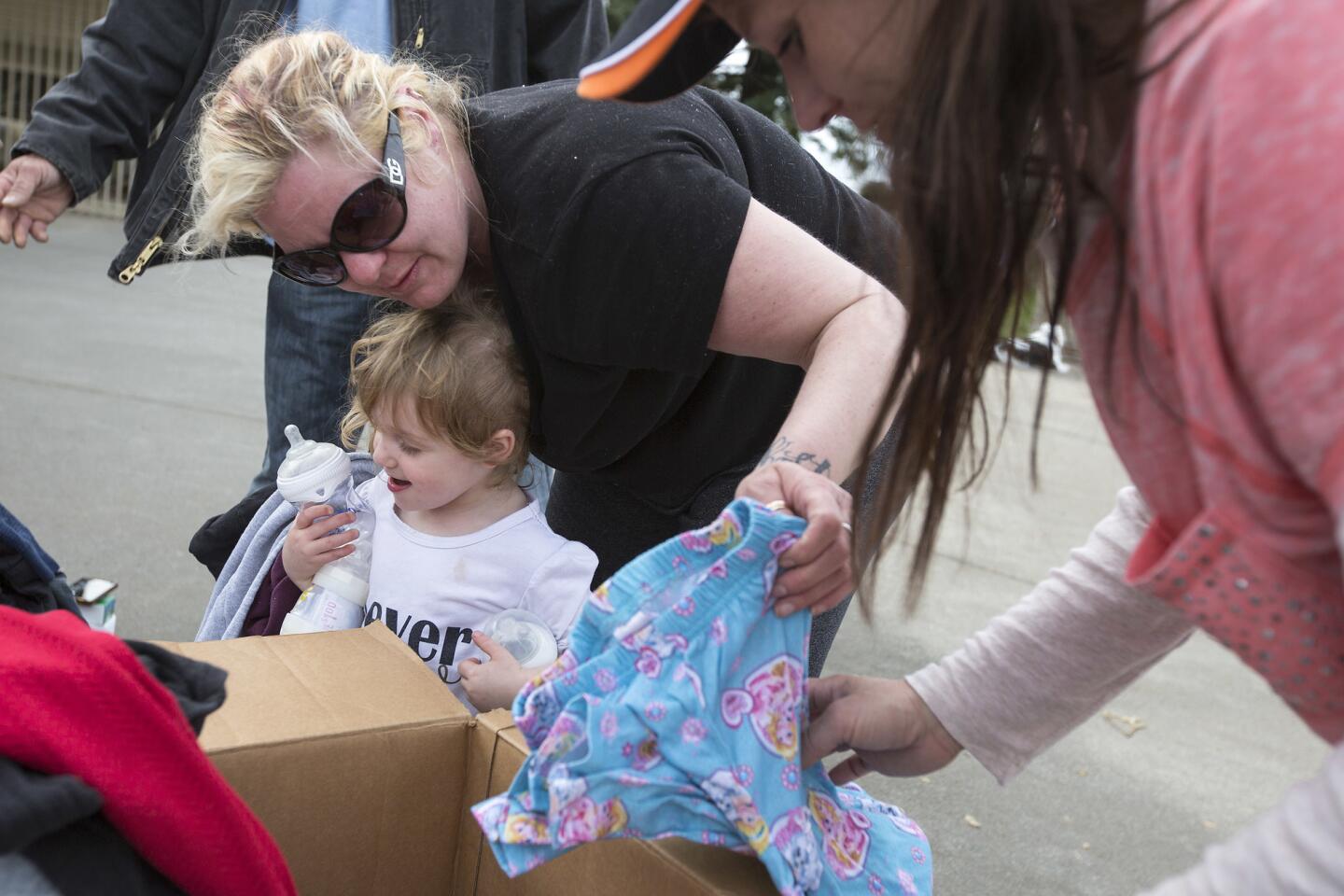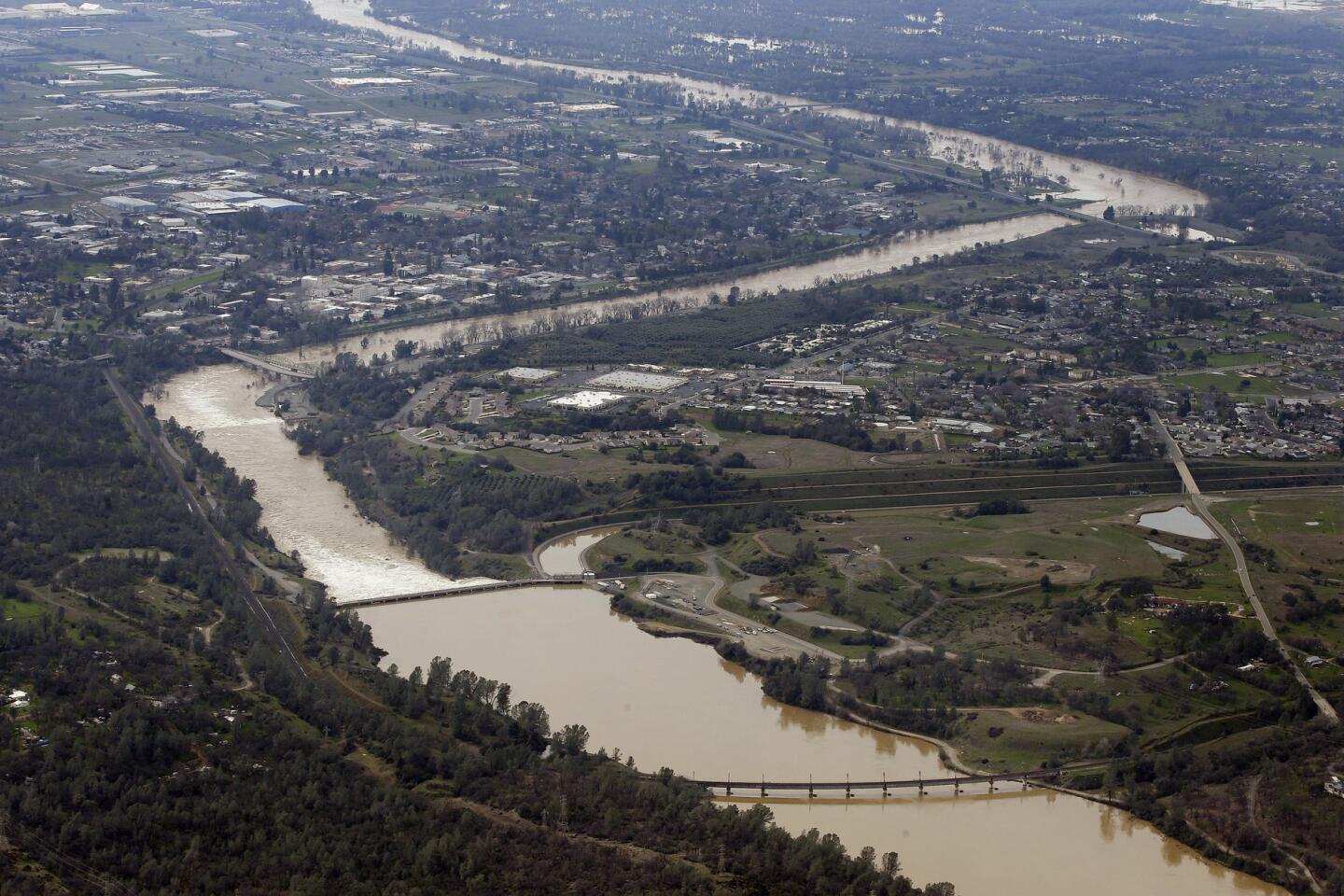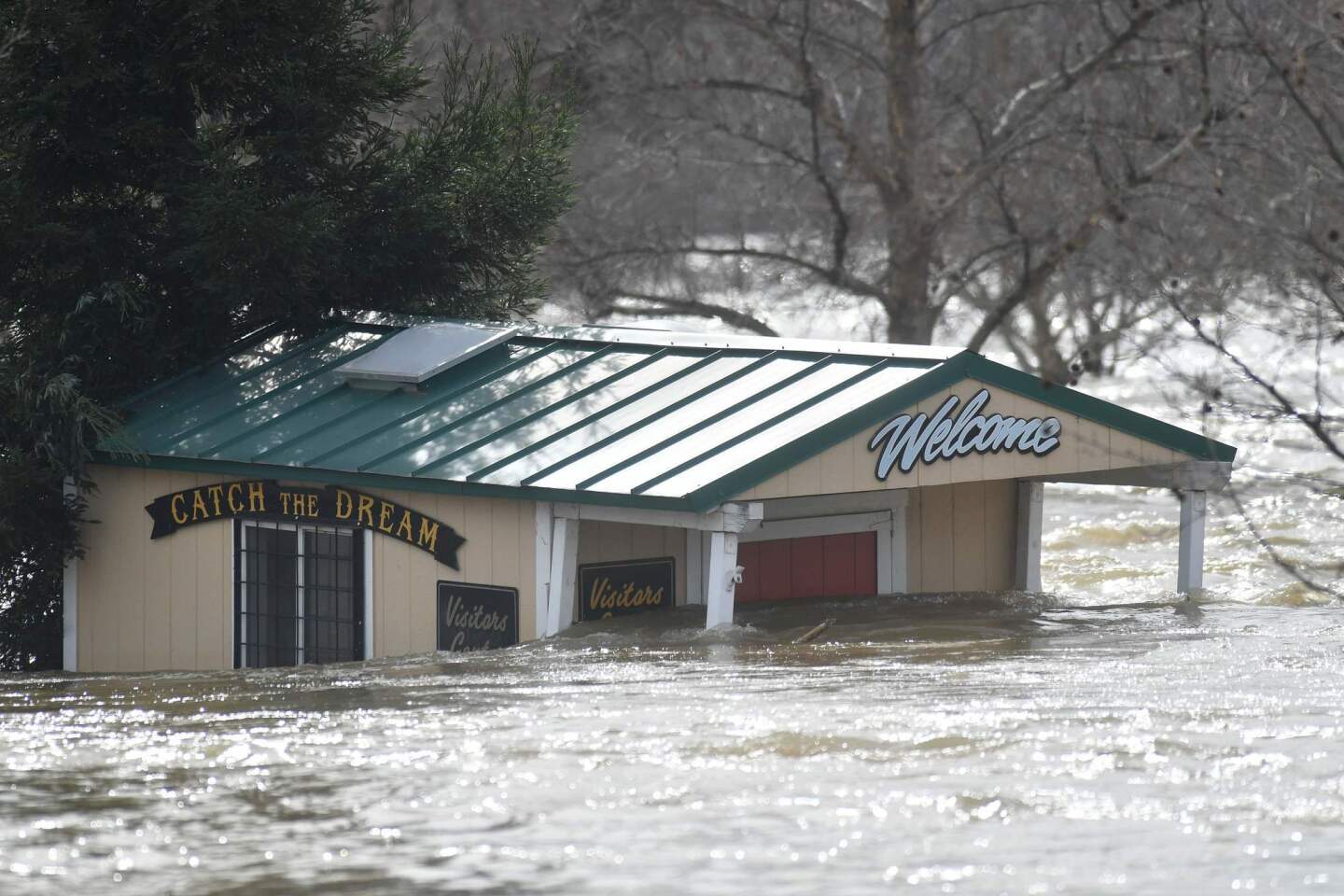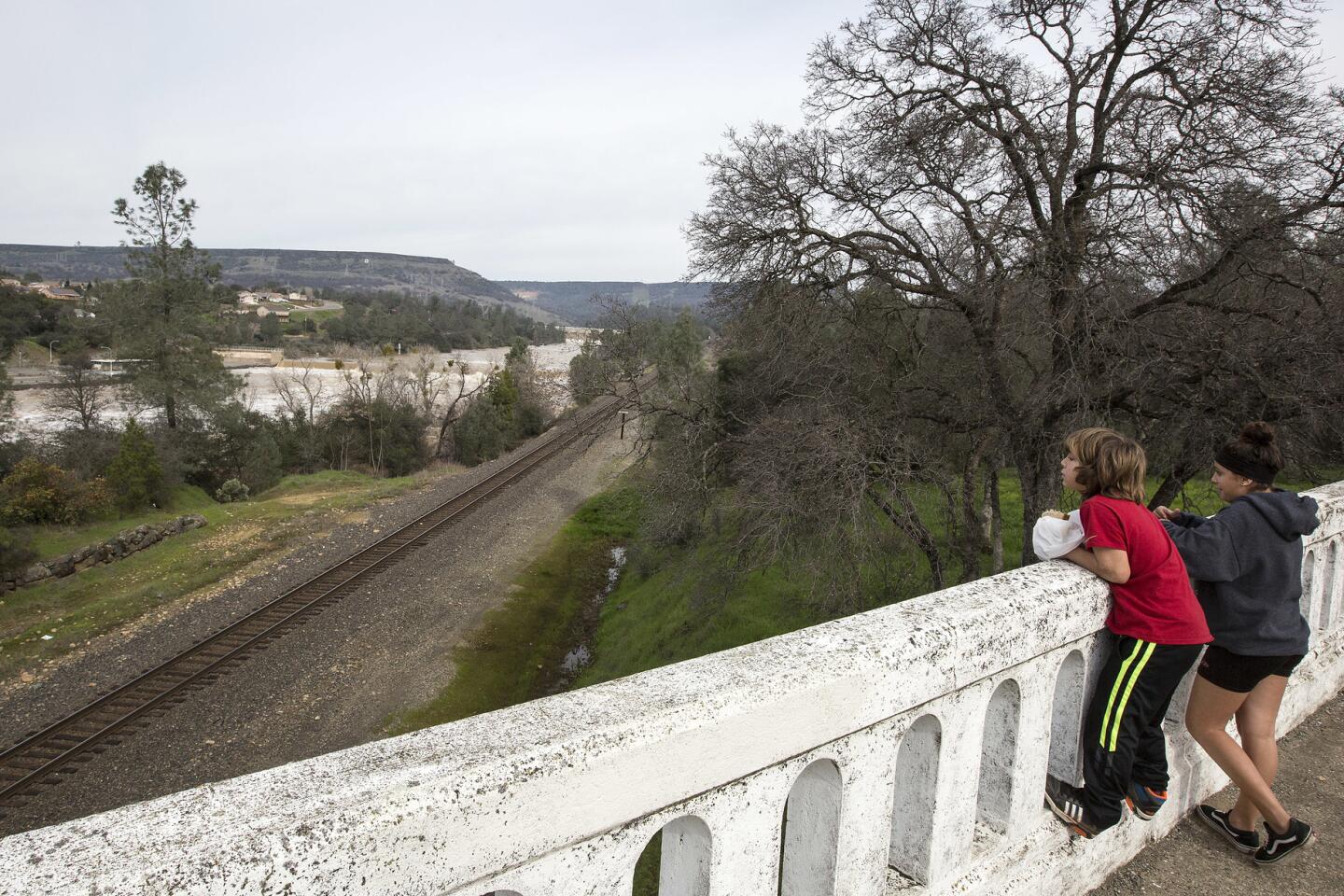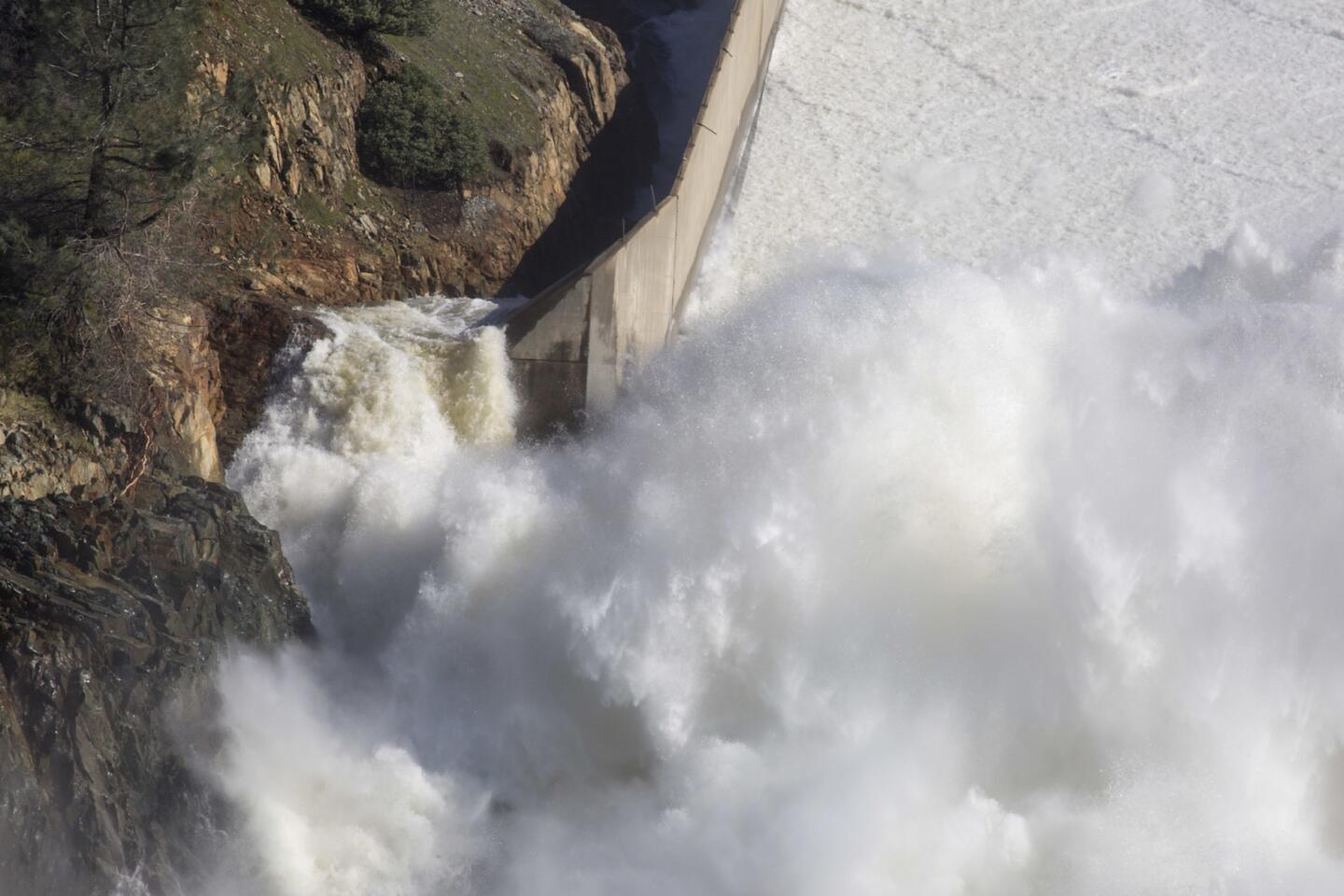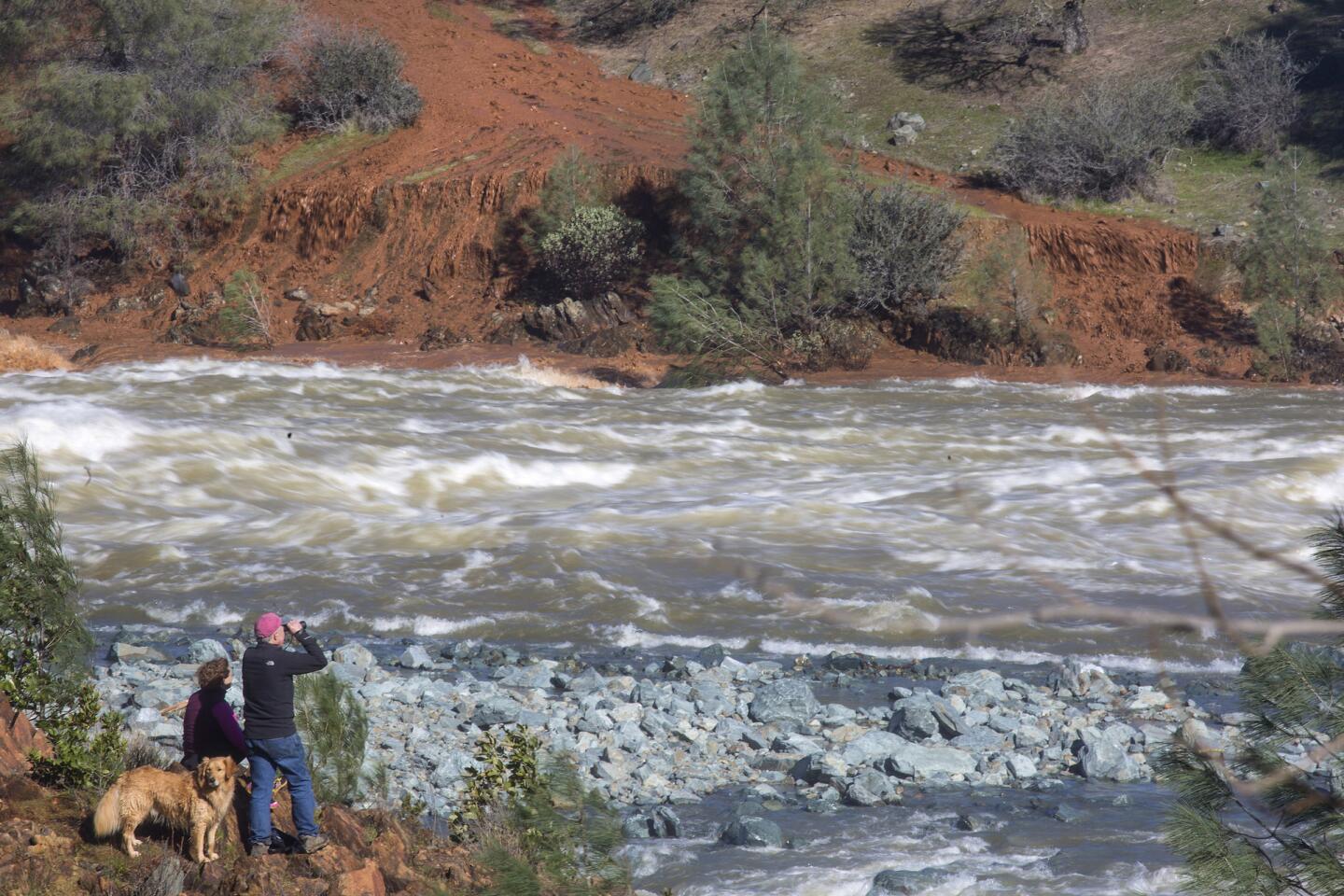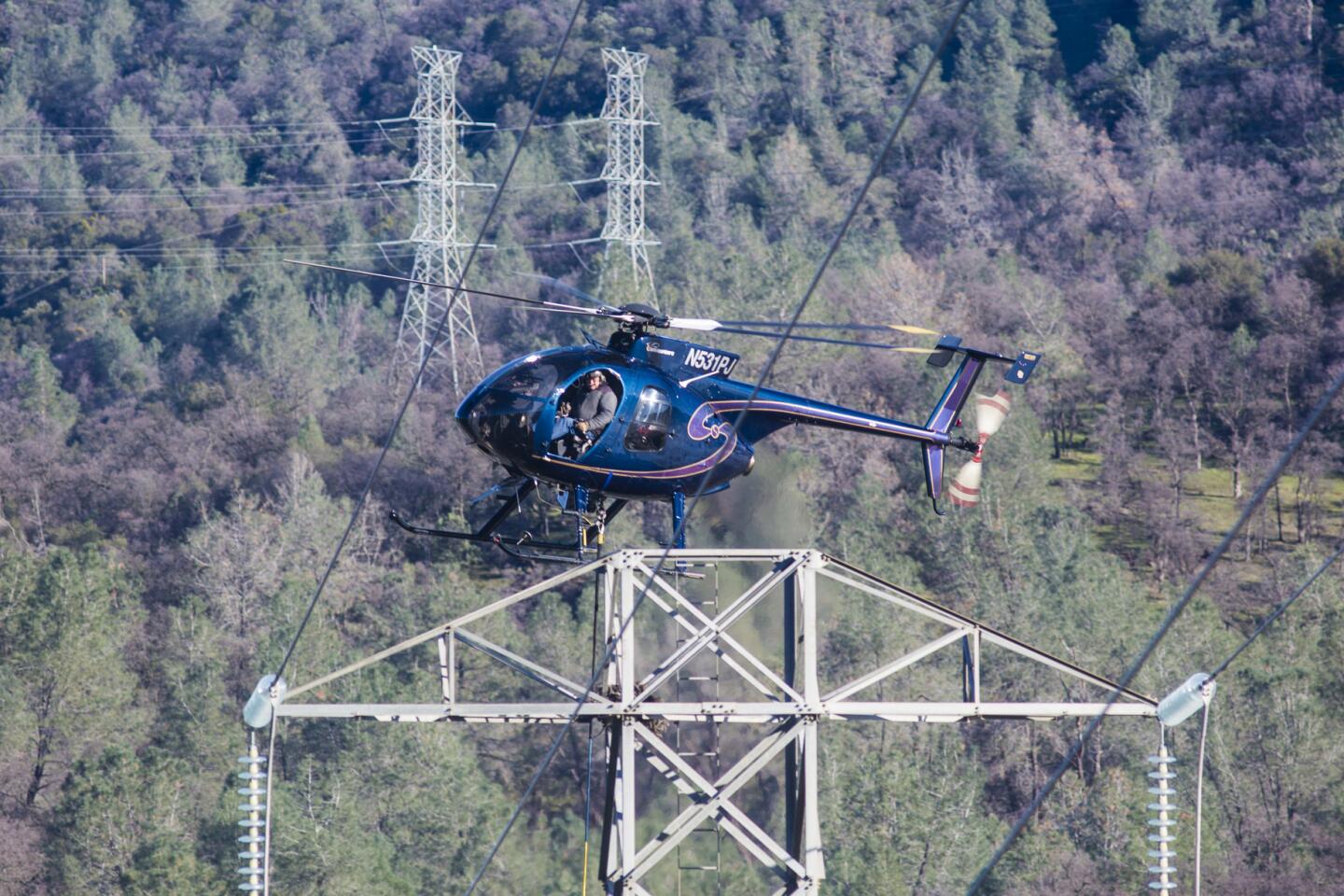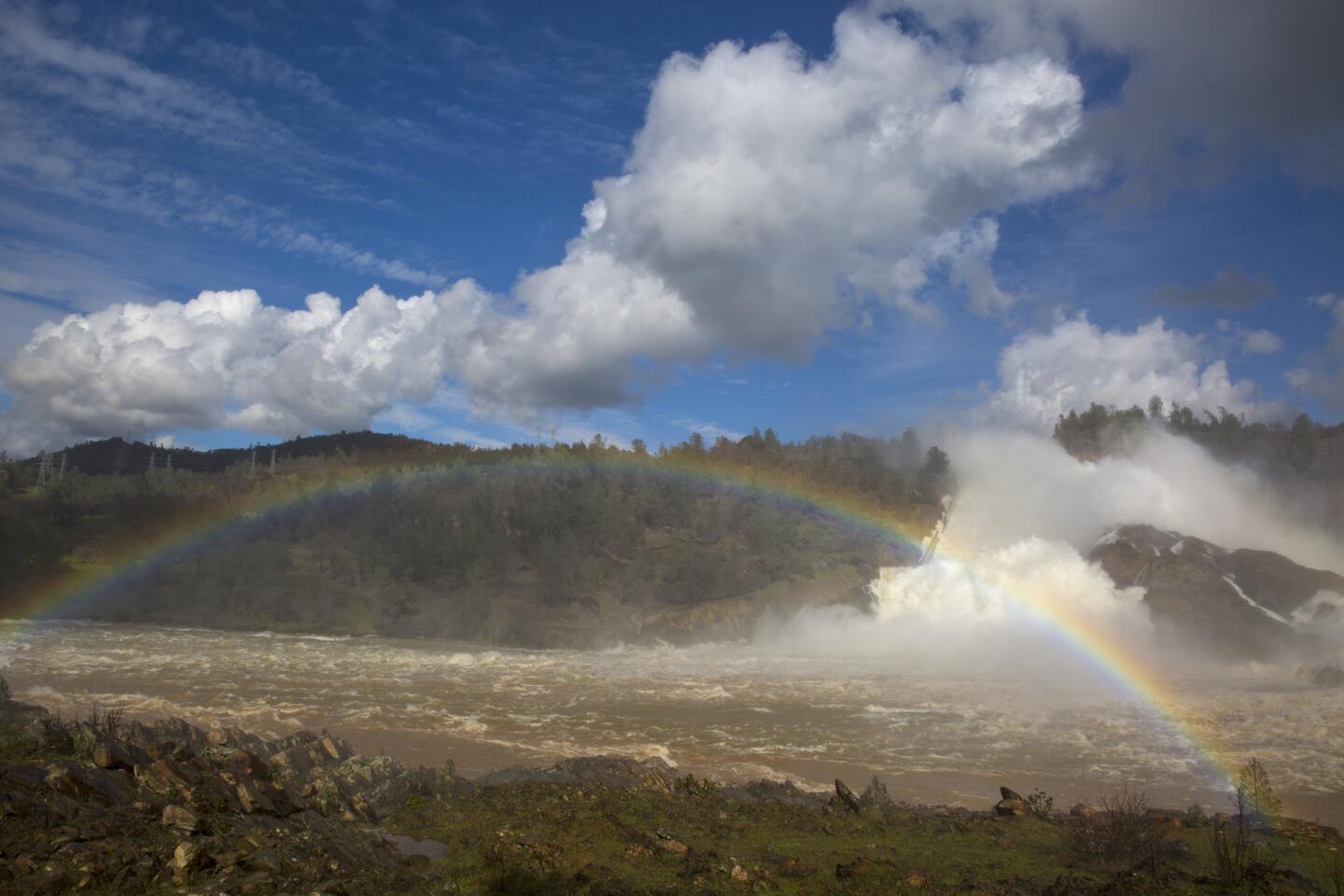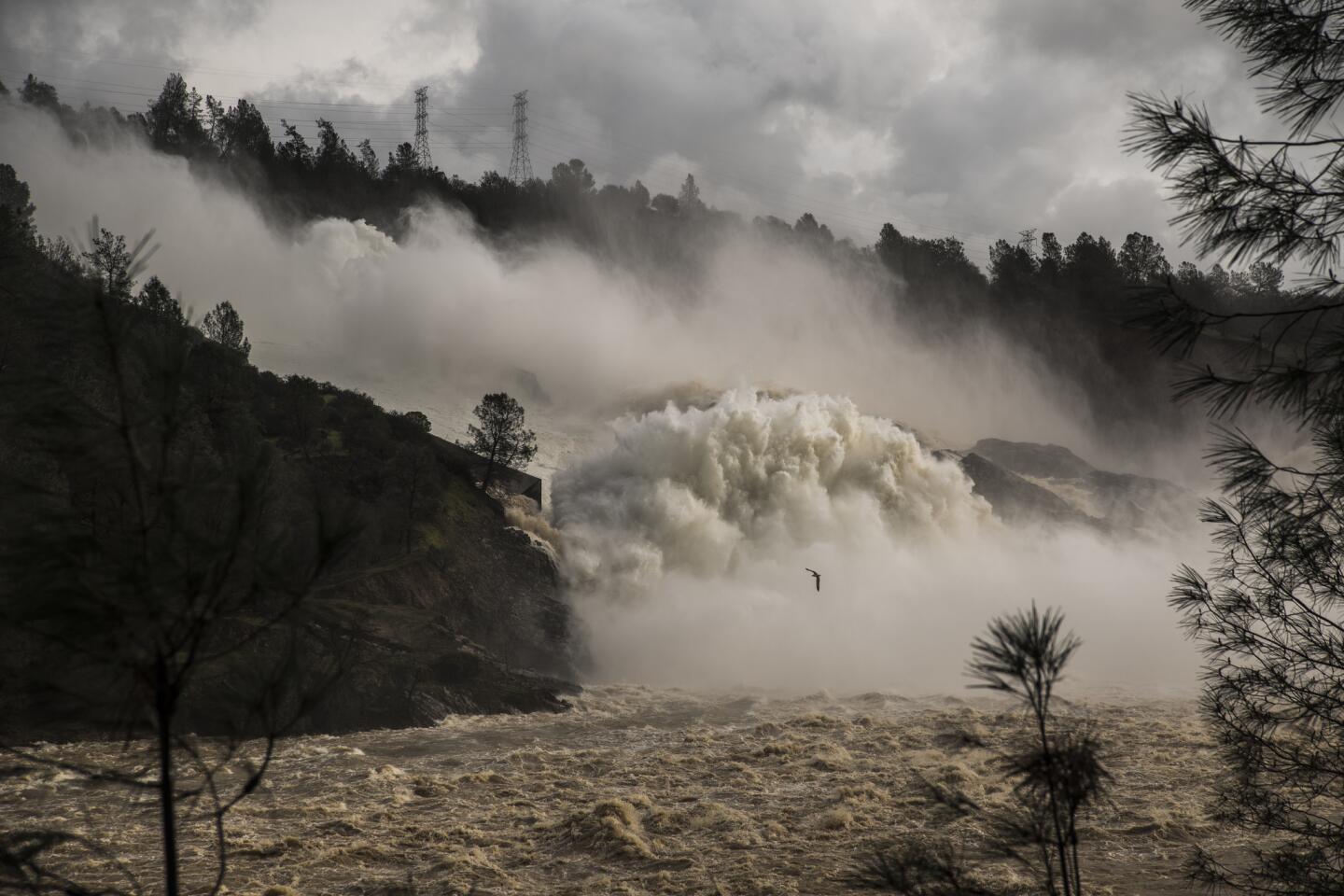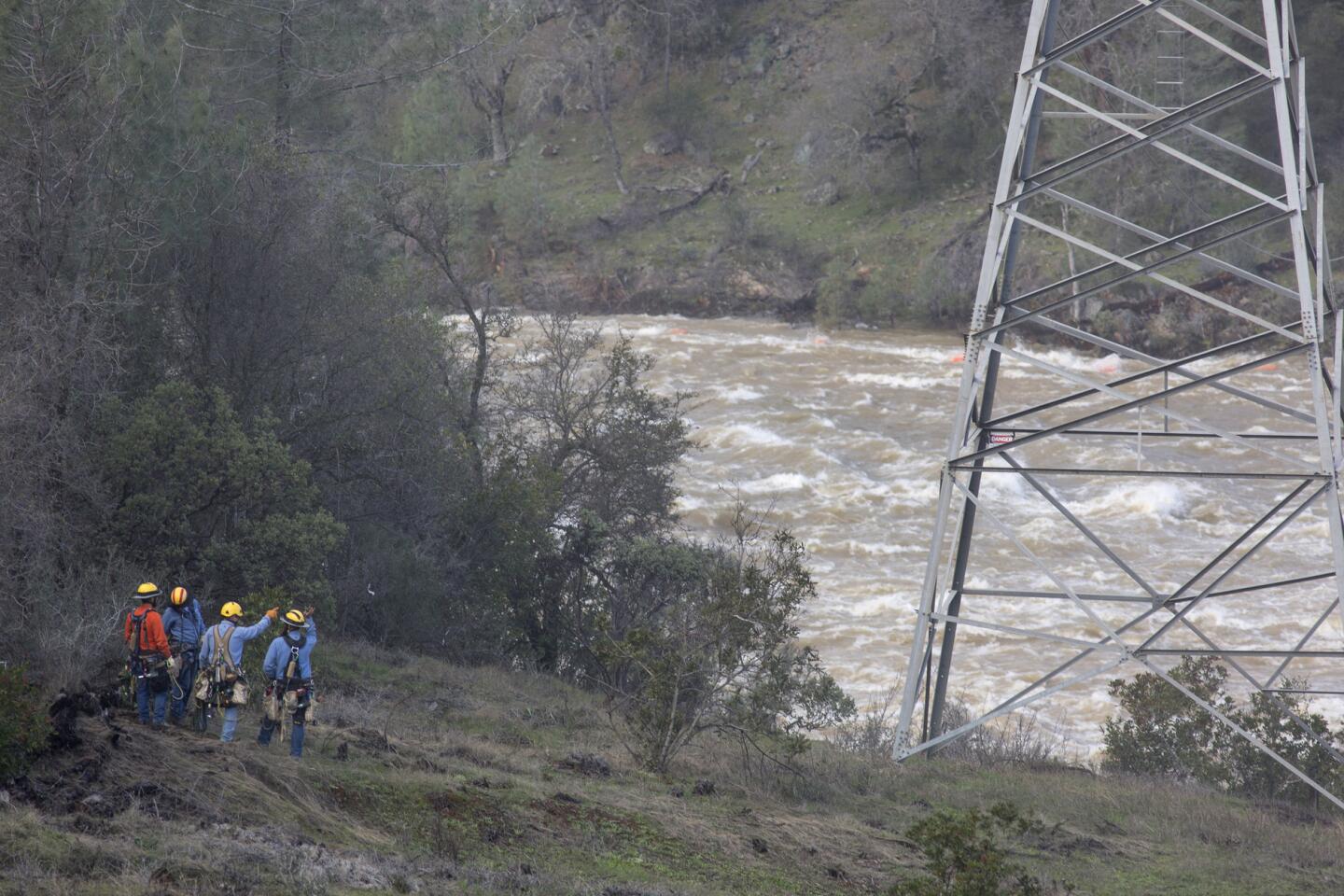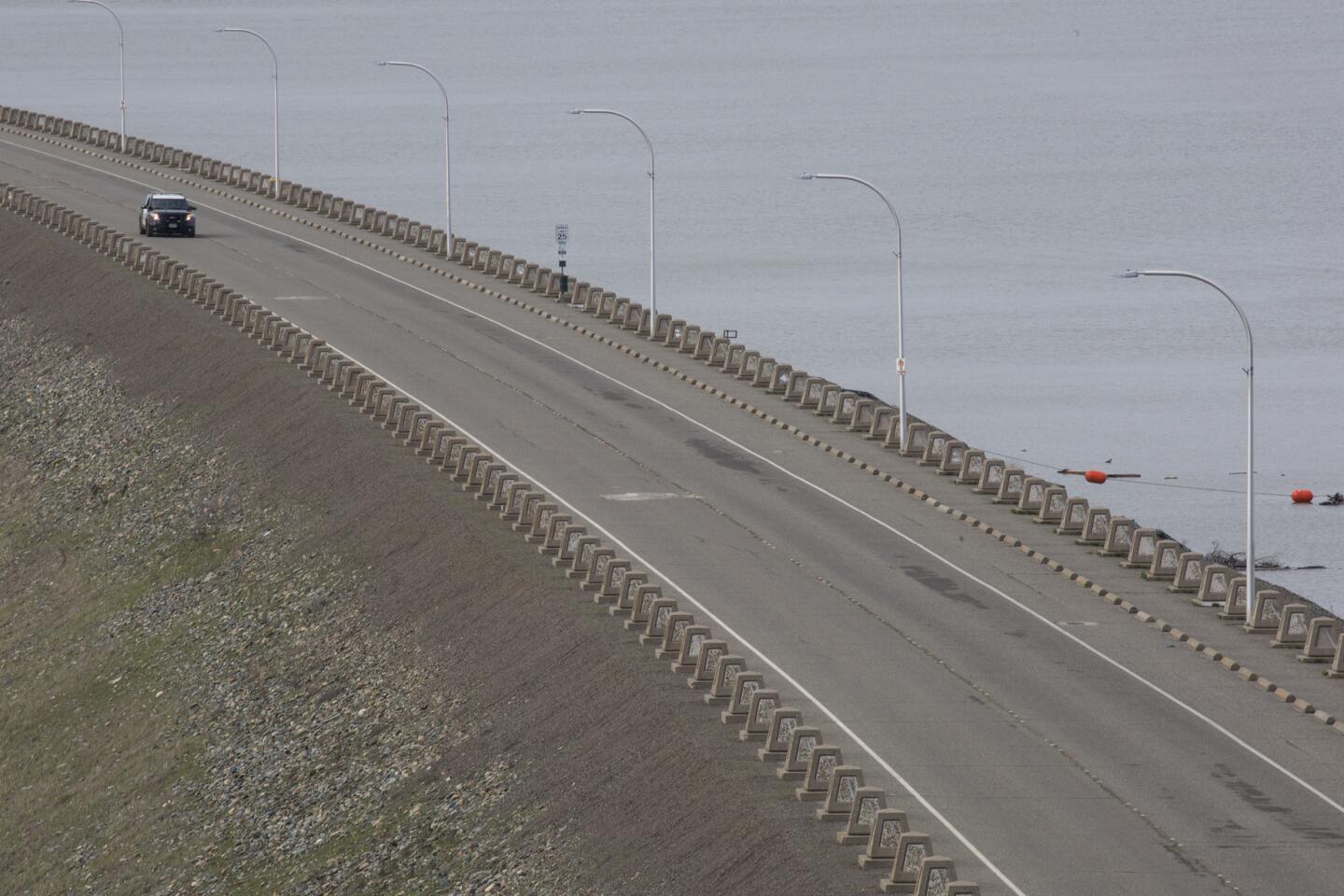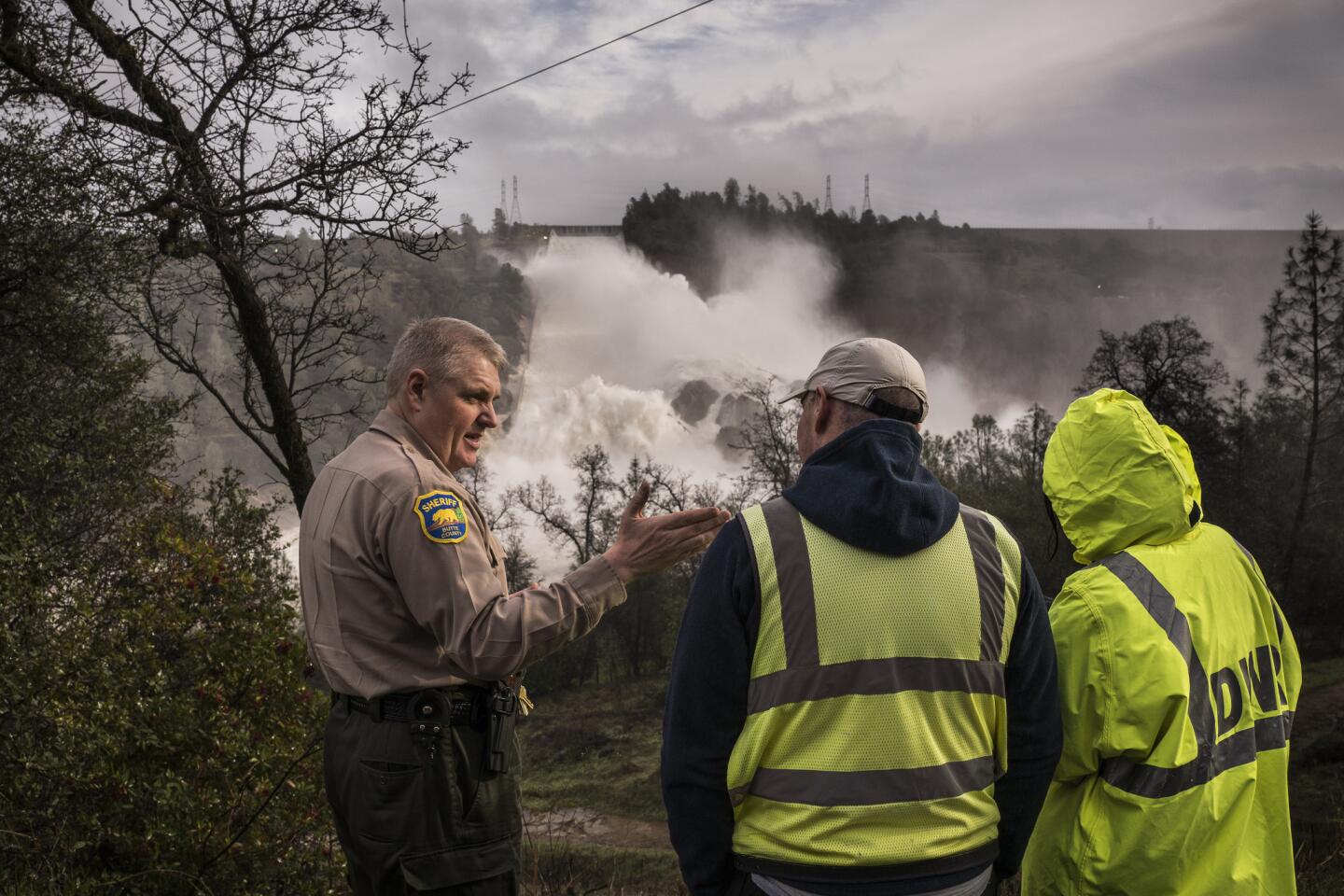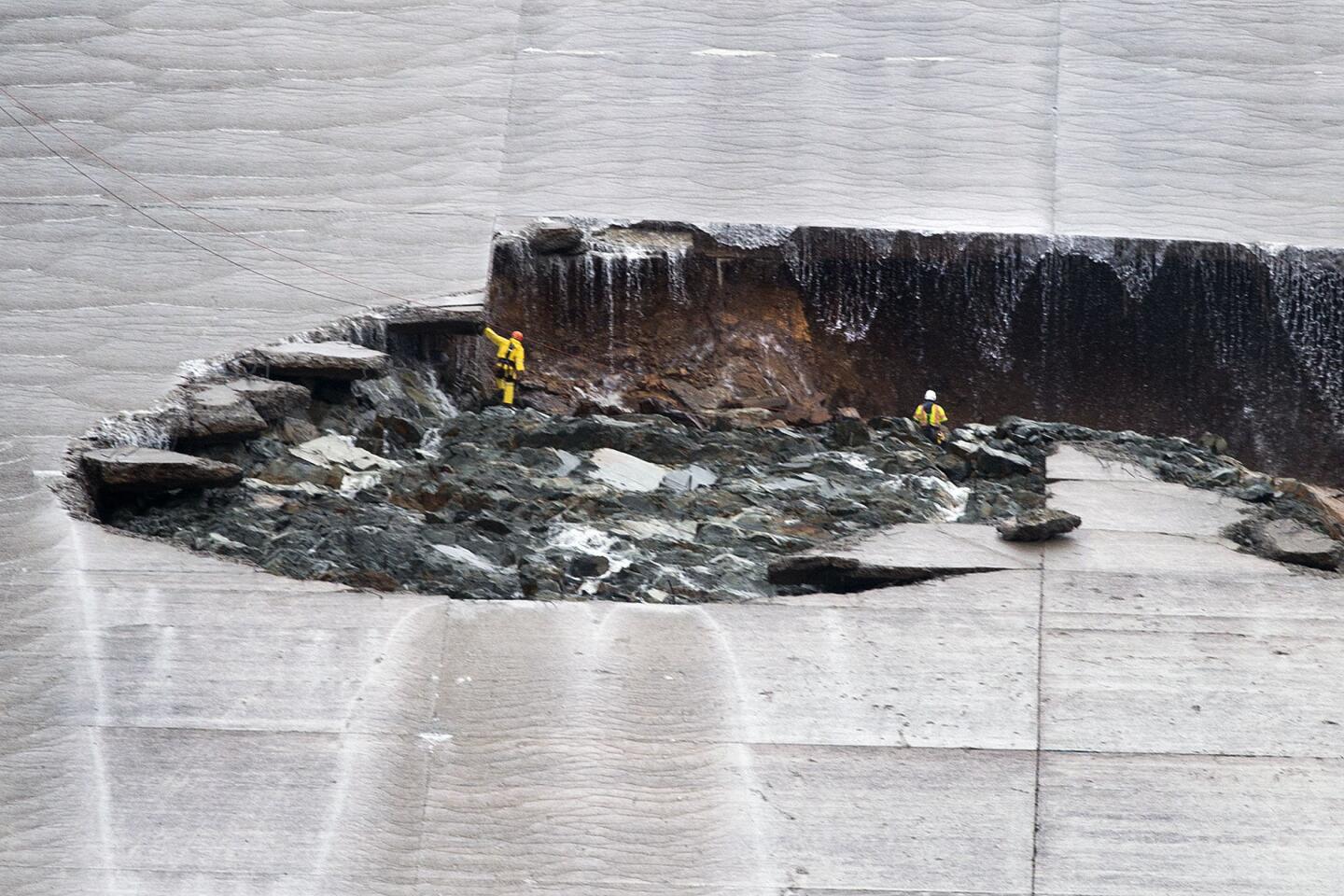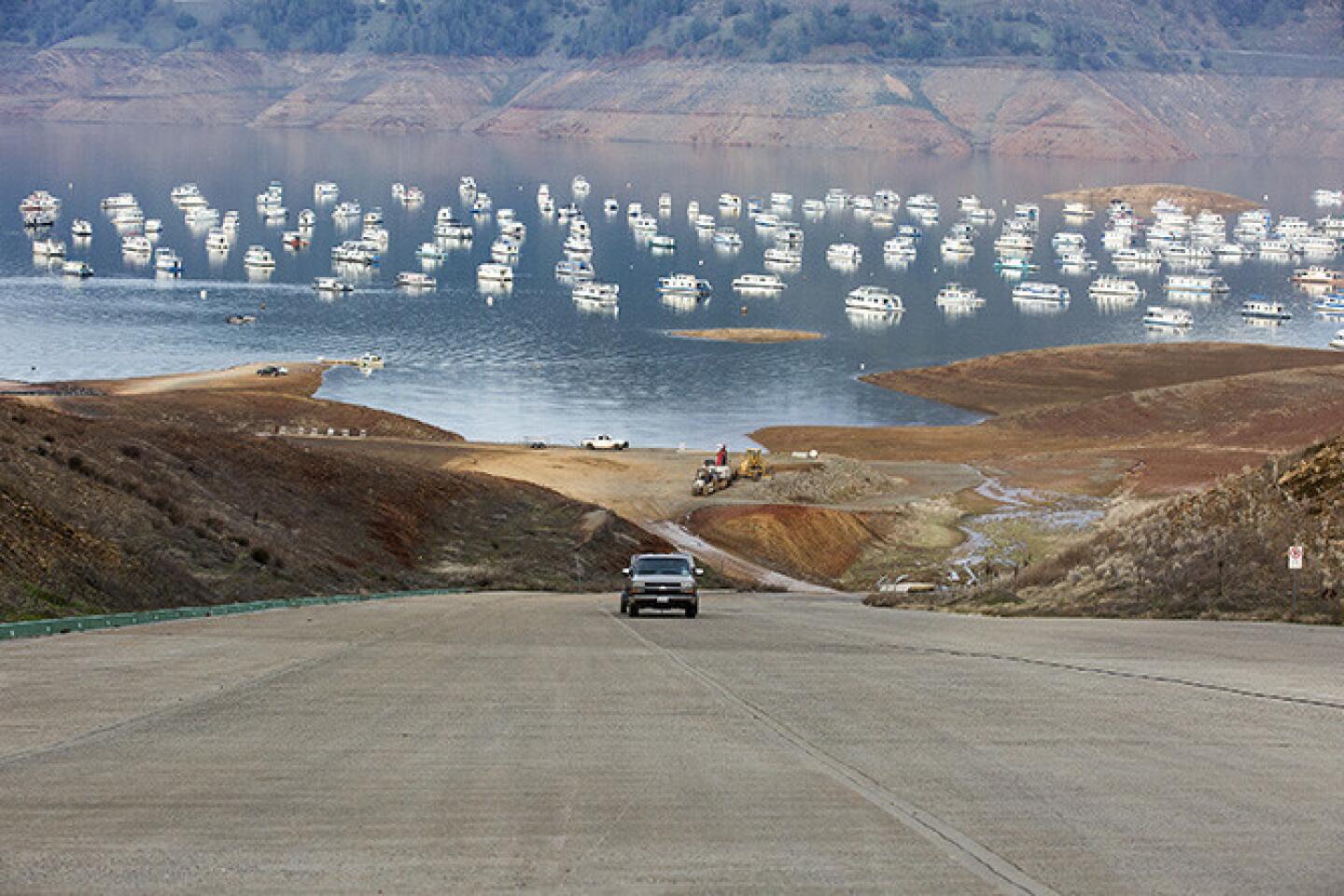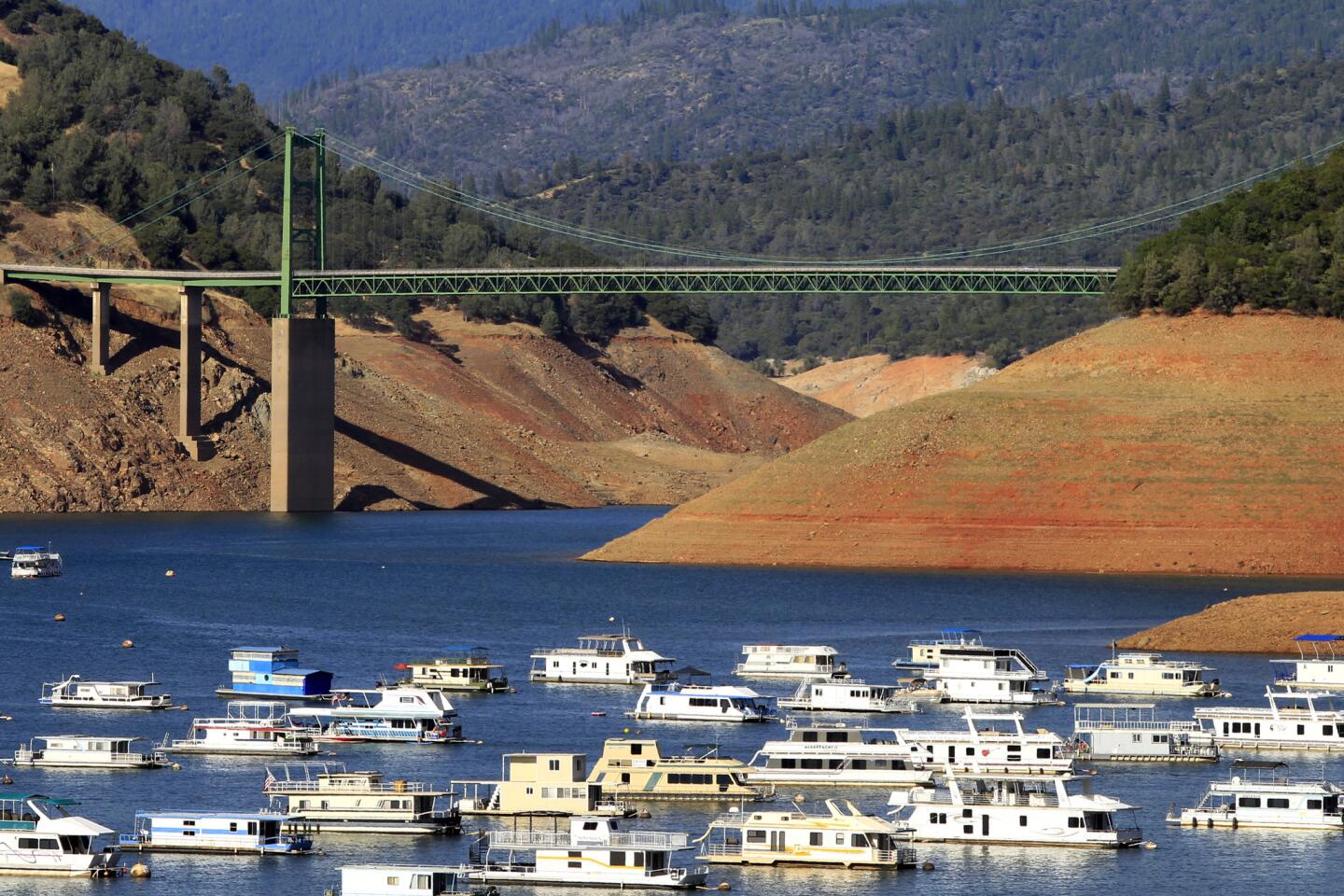Capitol Journal: Does California really need more dams? We’re running out of places to put them
- Share via
Reporting from In Sacramento — You hear this every time there’s a drought or deluge in California: “Why haven’t they built more dams?” Truth is, they’ve built a bunch. And they’re about done with it.
Tally them up. There are more than 1,400 dams in the state. At least 1,000 are major and 55 can hold 100,000 acre-feet or more of water.
One acre-foot is enough to supply two average households for a year.
There are 36 reservoirs that can contain at least 200,000 acre-feet. Eleven can hold 1 million or more.
The biggest is Shasta on the Sacramento River at 4.5 million acre-feet. Then comes Oroville with its broken spillways on the Feather River at 3.5 million.
The largest reservoir in Southern California is Diamond Valley in Riverside County at 810,000 acre feet. For perspective, Castaic Lake off Interstate 5 heading over the Grapevine is about 324,000 acre-feet.
So there’s already a heap of storage capacity in California — or what’s called “surface storage” in water talk, in contrast to underground aquifers. The largest 200 reservoirs alone have a combined capacity of 41 million acre-feet.
There’s at least one dam on every river running off the west slope of the Sierra except for the Cosumnes, just south of Sacramento, says Jeffrey Mount, a water expert at the Public Policy Institute of California. “And that doesn’t have enough water in it to make a dam worthwhile,” he adds.
Thankfully. The Cosumnes frequently spills over its banks, flooding roads and barns. But just before it enters the Sacramento-San Joaquin River Delta, the natural-flowing Cosumnes forms a popular nature preserve that annually hosts thousands of migratory waterfowl, including giant sandhill cranes.
California has lost 95% of its wetlands since 1900. So pardon if talk of “balancing” what’s left isn’t really appealing.
Anyway, dams don’t make it rain and end droughts. And lack of rain was our principal drought problem, regardless of corporate agriculture’s squawking about governments and judges coddling salmon.
“You can build more dams, but there isn’t more water flowing into California,” says Jay Lund, a water expert and professor of civil and environmental engineering at UC Davis.
“This year, there’s more water than reservoirs. But if you can only fill them every 10 years, they make less sense economically.”
There aren’t many sensible dam sites left in California.
“We’ve already built the cheap dams,” Lund says. “The remaining sites mostly are pretty expensive and are not going to give you that much water. Economically, you’re not going to find a lot of people volunteering to pay for those dams. They’d be happy if someone else paid for one.”
For environmental and cost reasons, Gov. Ronald Reagan killed dam proposals on the Eel River and the Middle Fork of the Feather nearly 50 years ago. An earthquake scare later scuttled a proposed dam on the American River above Folsom Lake.
There are earthquake faults all over California that unnerve dam builders. “There’s nothing simple about water in California,” Lund notes.
The best bet for the next major dam in California is called Sites, named after an old settlement in the low foothills of the Coast Range 14 miles west of the Sacramento River near Colusa.
This would be an “off-stream” reservoir that didn’t dam a river, so there’s much less opposition from environmentalists. Water would be piped into the reservoir from the Sacramento when it was running high.
It would have a capacity of 1.8 million acre-feet and be the seventh-largest reservoir in California. It’s estimated that 500,000 acre-feet could be delivered a year, split between agriculture, domestic and environmental use. But there’d be only minor flood-control value, experts say.
The cost? About $5 billion. Proponents are preparing to seek money from the $7.5-billion water bond issue that voters approved in 2014. Of that, $2.7 billion was set aside for water storage.
Under the measure, up to half a project’s cost could be paid for by the bond money. The rest would need to be footed by the water users on their monthly bills.
But before water districts in the San Joaquin Valley and Southern California commit to pitching in, they’d need assurance the water could be moved through the troubled delta. And that’s anything but certain.
Delta farmers and environmentalists are fighting Gov. Jerry Brown’s $15.5-billion plan to dig two monstrous tunnels to siphon off fresh Sacramento River water before it ever reaches the estuary. And Brown hasn’t shown any interest in trying to fix the fish-chomping water transfer system that exists.
One other major dam is being promoted, but its economics are less promising and its environmental impact more controversial. It’s Temperance Flat near Fresno on the San Joaquin River above Friant Dam. Its backers also are eyeing a piece of the 2014 bond issue.
“The default reaction when we’re faced with a water emergency is the 20th century notion that large investments in concrete will somehow solve our problem,” Mount says.
“But if you’ve already tapped out that, the alternative is to look more closely at whether we can do a better job with what we have. And to date we haven’t done that.”
Operate the dams more efficiently. Recharge the aquifers. Expedite groundwater regulation. Capture storm runoff. Recycle. Desalinate.
Build Sites. Compromise and fix the delta.
One thing is not the answer: continuing to plant thirsty nut orchards in the arid San Joaquin Valley.
Follow @LATimesSkelton on Twitter
ALSO
Dam officials should’ve listened to those warnings about Oroville. Now we’re stuck with the tab
More to Read
Get the L.A. Times Politics newsletter
Deeply reported insights into legislation, politics and policy from Sacramento, Washington and beyond. In your inbox twice per week.
You may occasionally receive promotional content from the Los Angeles Times.
